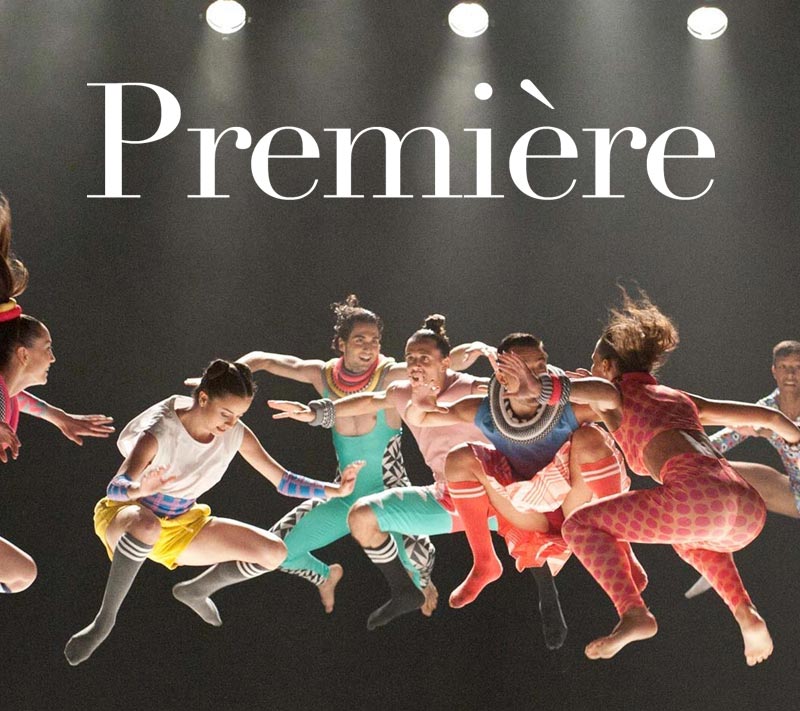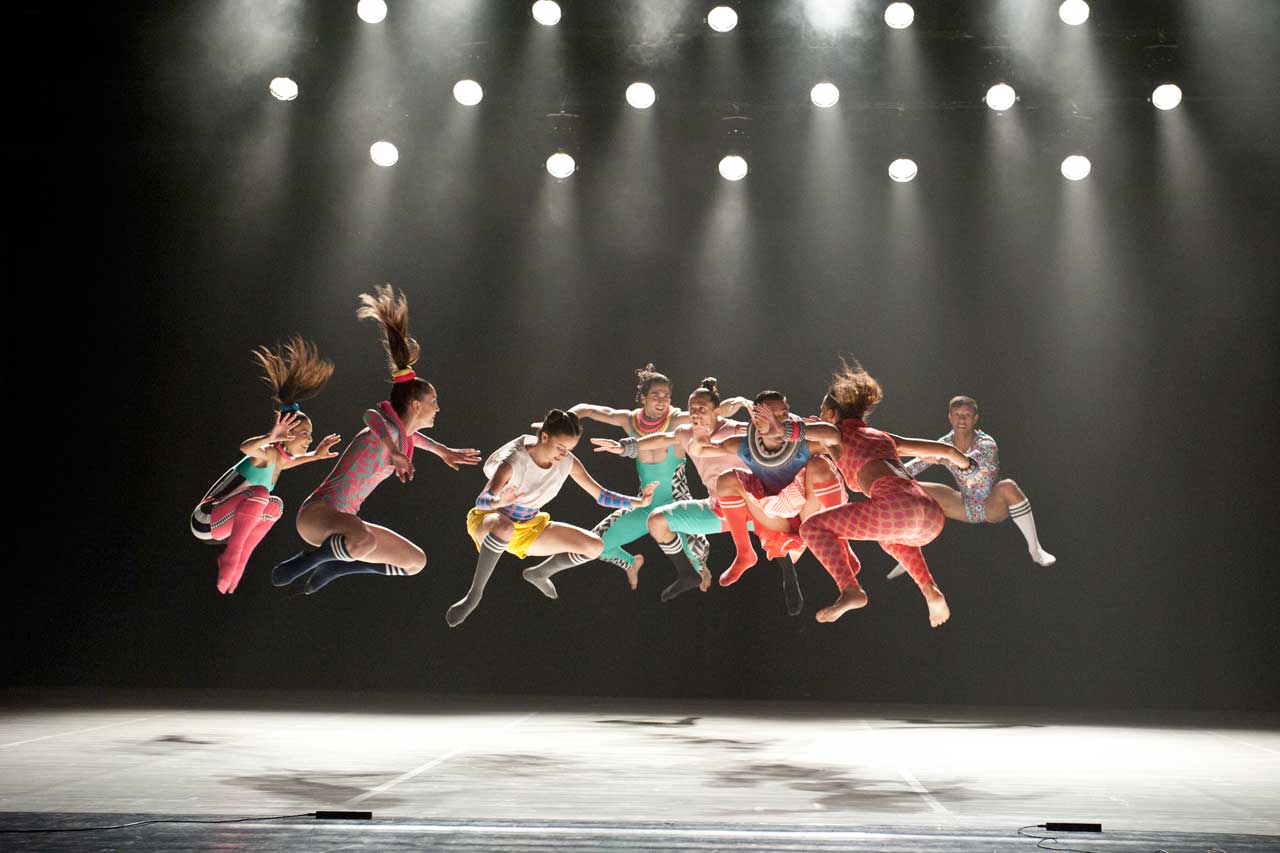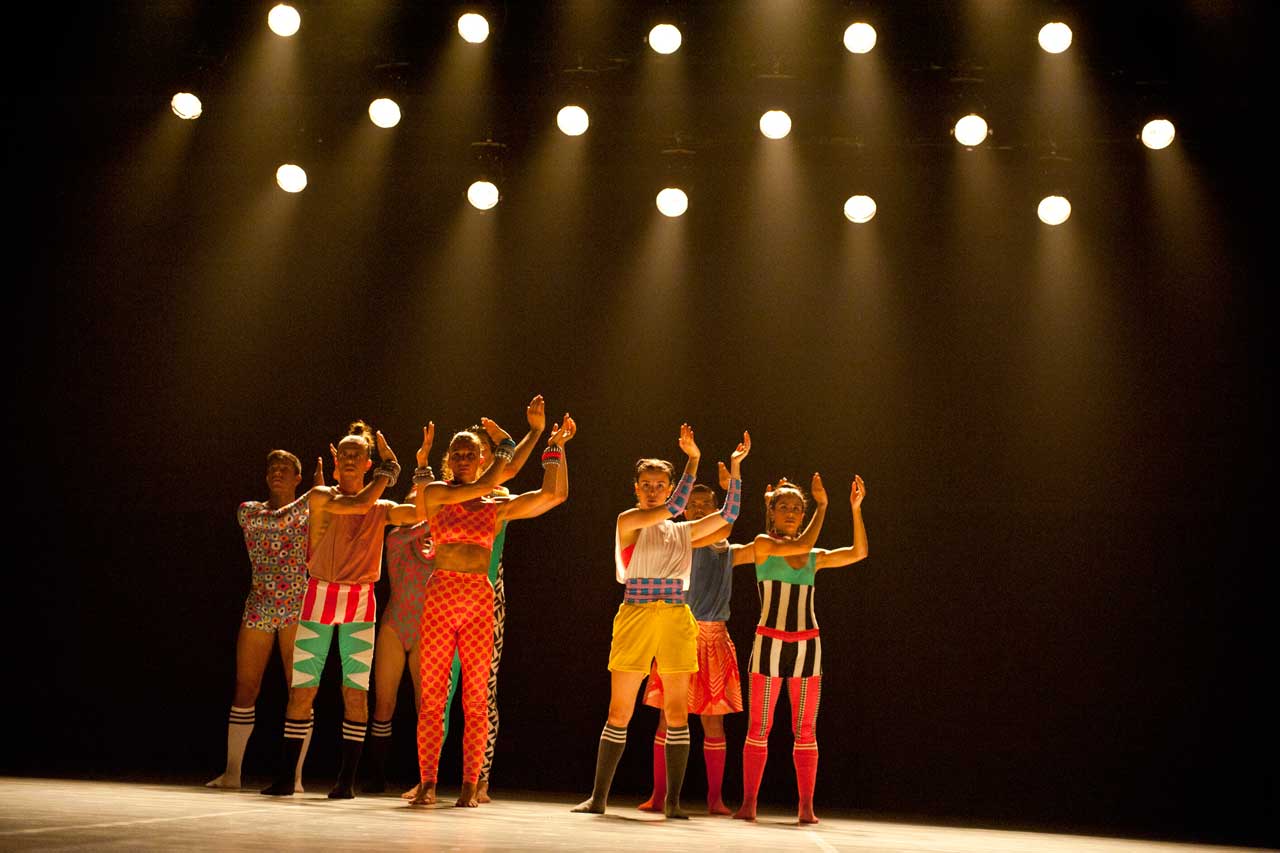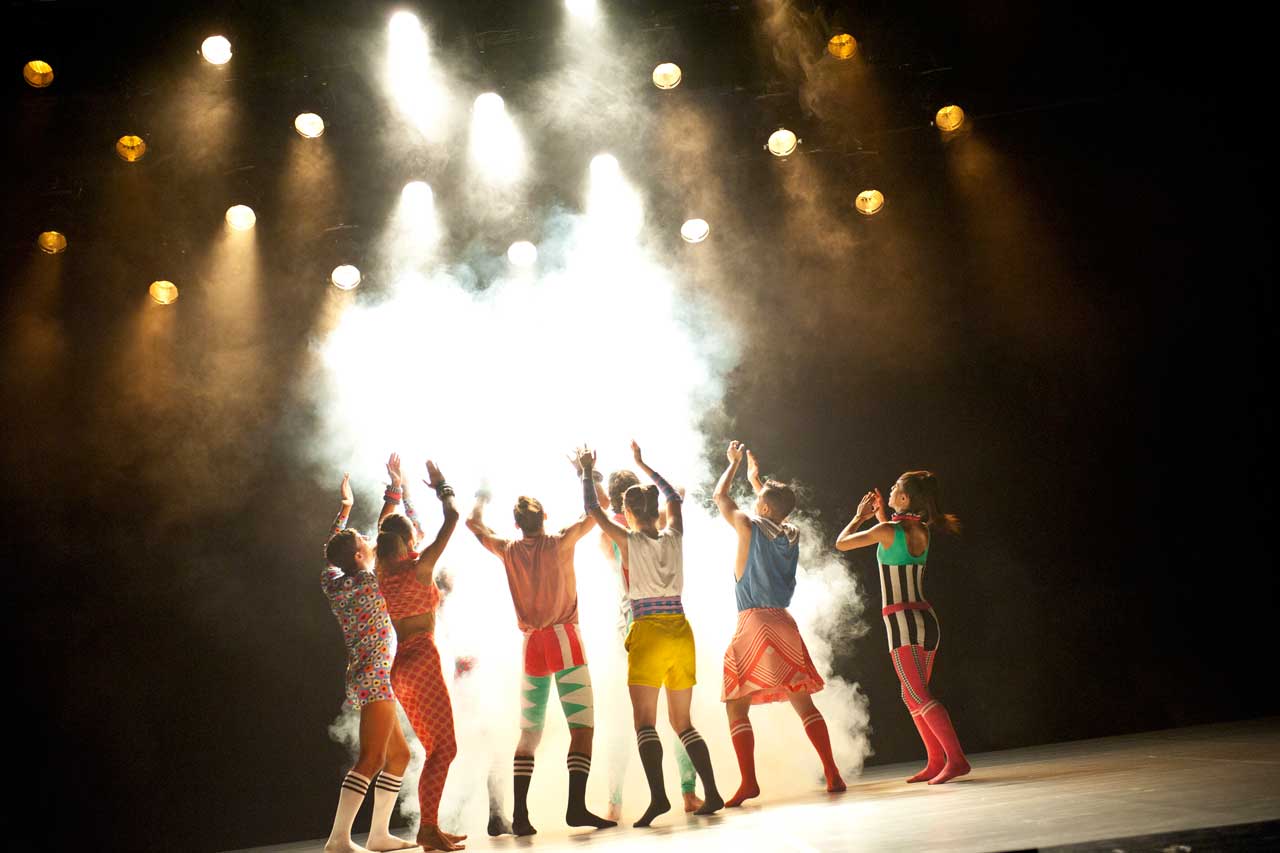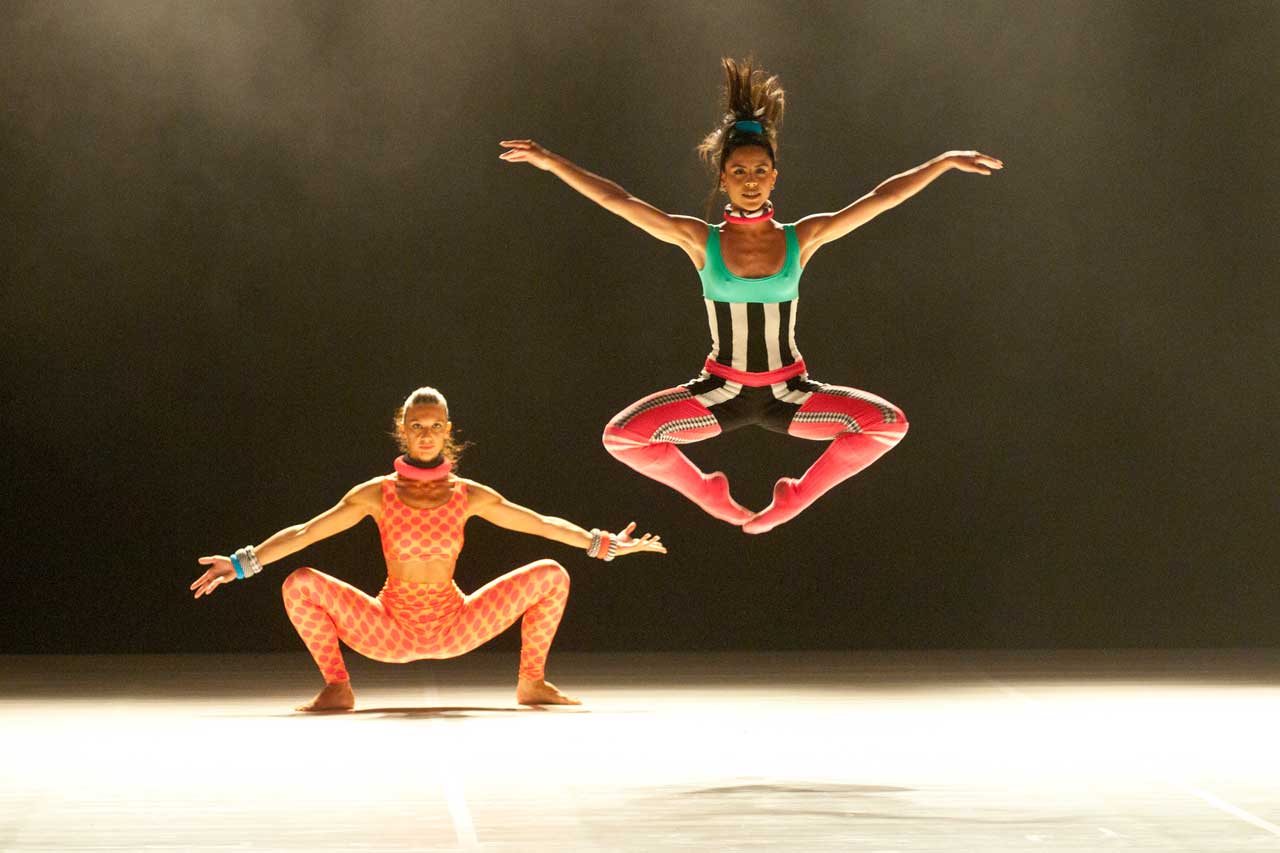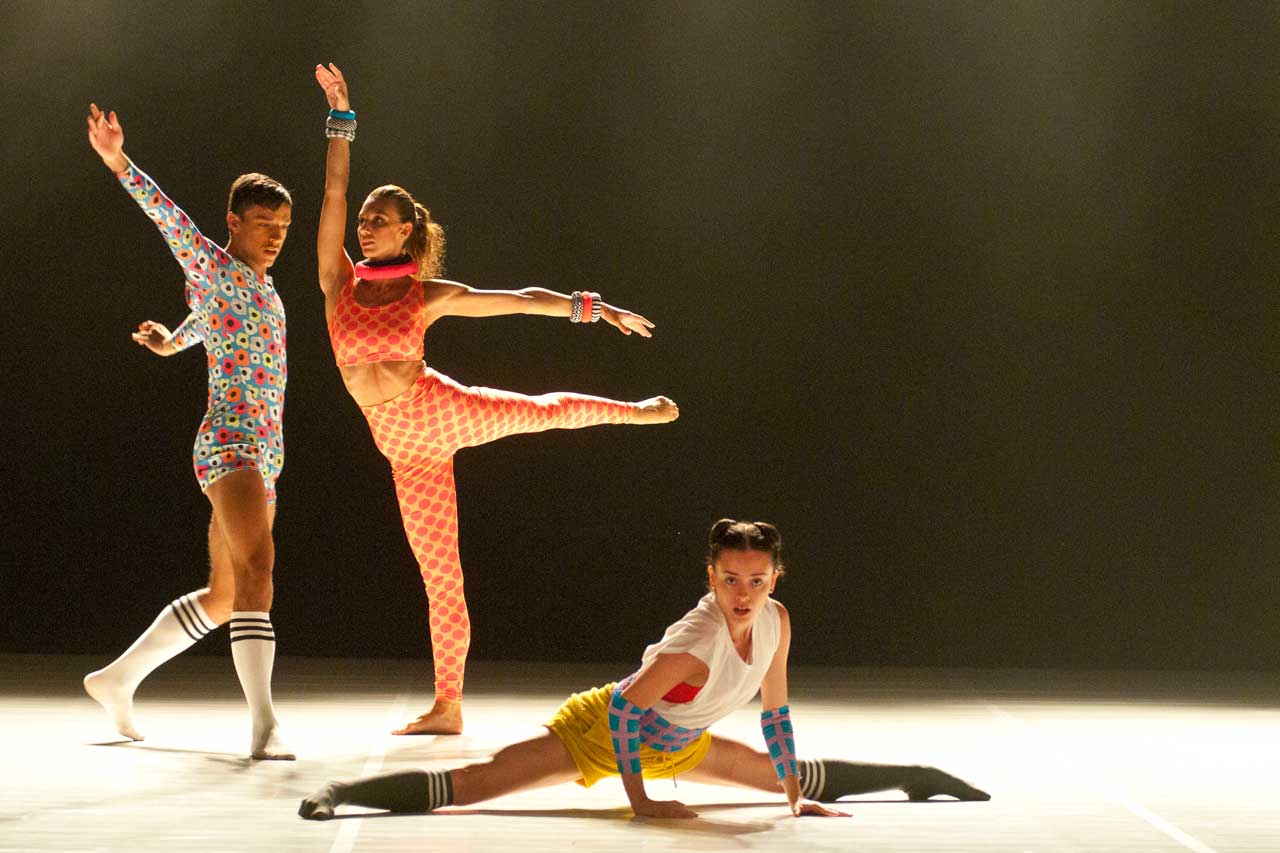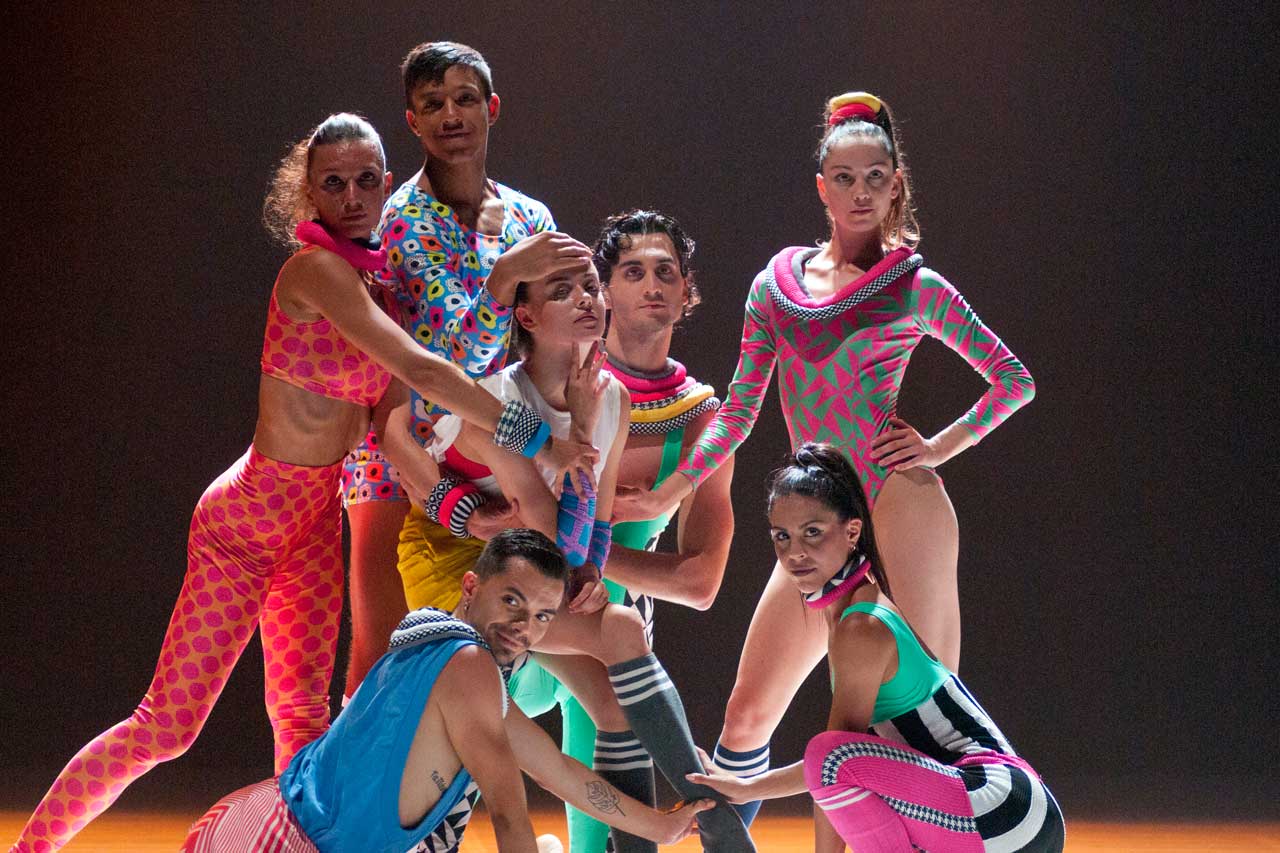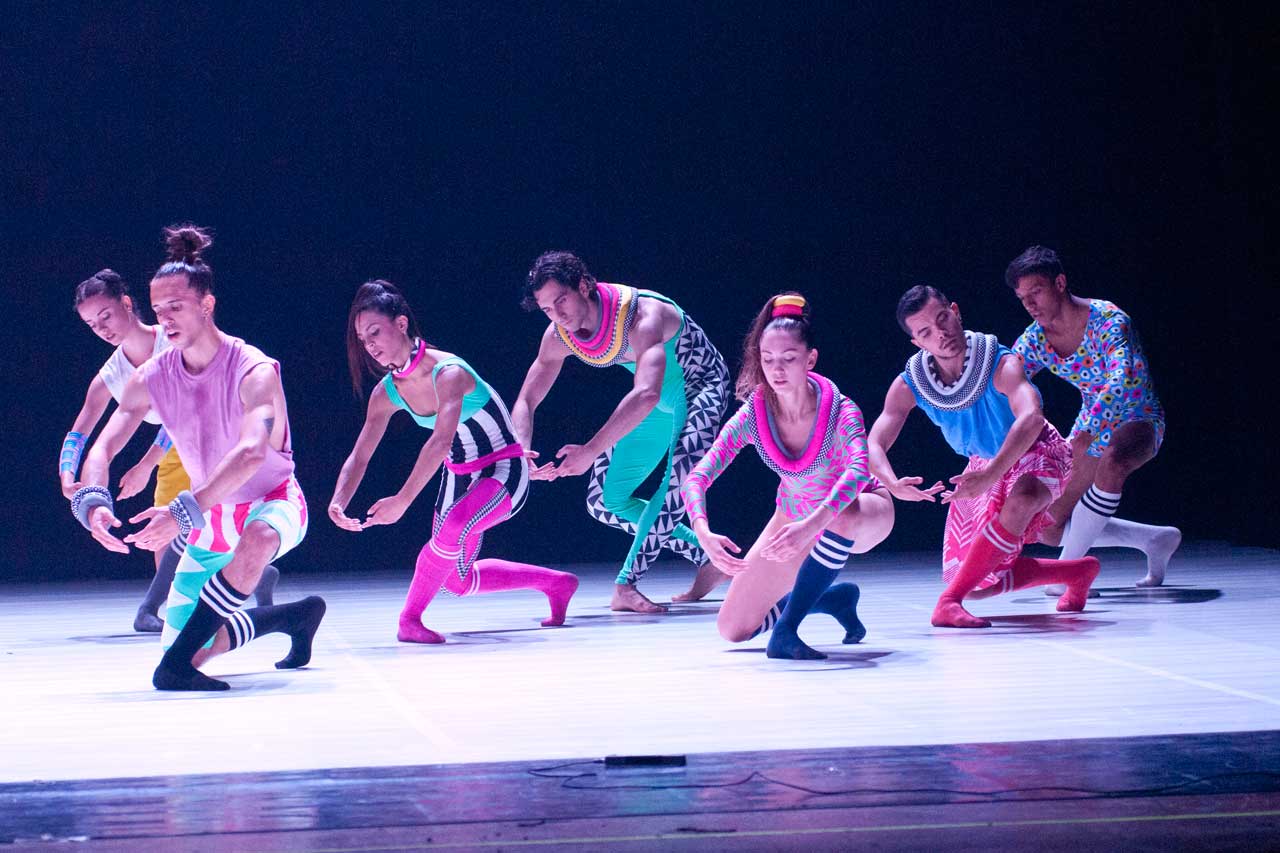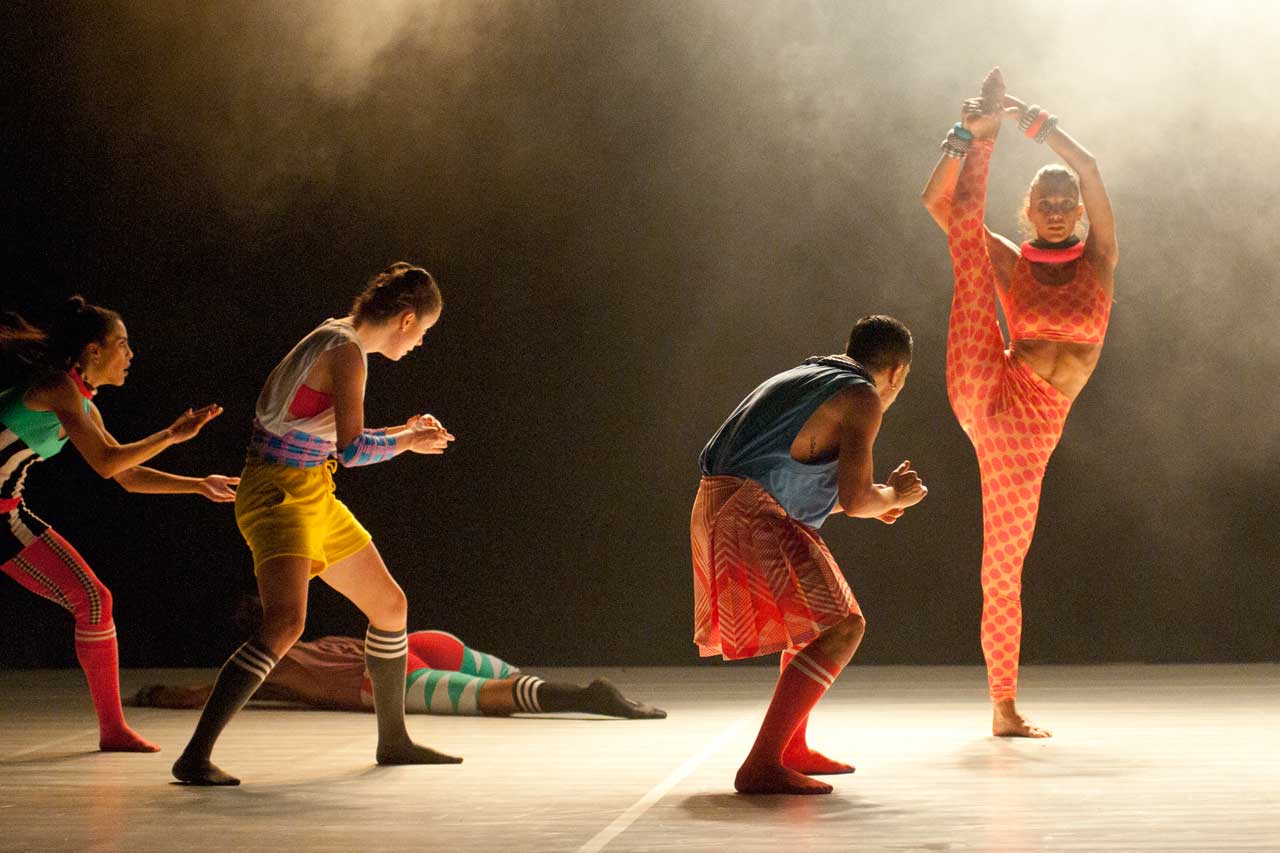Director’s note +
“Première” by Andrea Costanzo Martini contemplates the question: Why do we dance? This query arises prior to every creative endeavor, and the answer unfolds in unexpected instances… – fleeting fragments and glimpses of an indefinable sensation. These are moments when we grasp a deeper understanding of ourselves, recognizing our infinitesimal place within a vast cosmic design. “Première” is born from the convergence of Andrea Costanzo Martini and the dancers of Balletto di Roma, fueled by fascination for these young artists who pursue movement as both a personal emotion and a collective need. The production pays tribute to humanity, celebrating the distinct and irreplicable traits of individuals, ranging from their most delicate to their most fierce aspects. What cosmic alignment allowed them to stand on this stage, ready to offer something for us, the audience? As the performance unfolds, taking us through uplifting dances in the glow of bonfires, tempestuous sequences, moments of serene beauty, and moments of intense frenzy, “Première” unveils the dance company as akin to a village, a tribe, whose fundamental necessities find fulfillment through codes and rules, reminiscent of the interplay of light and shadow on a theatrical stage. The context of the pandemic magnifies these themes, arising from a prolonged hiatus away from theaters, prompting the spontaneous query: How do we reclaim the stage? What compels us to showcase ourselves to the public gaze? What elements do we share, and what facets of our being become impossible to conceal when we are on stage? “Première” evolves into a ritual, woven with touching and impassioned applause – the sole point of interaction between the artists and the yearning audience.
History and Timeline +
Originally planned for creation in May 2020, the project faced the challenge of the COVID-19 pandemic. However, this crisis gave birth to an unprecedented experiment in “remote creativity”. It virtually connected… two major cities, with choreographer Andrea Costanzo Martini guiding the Company’s dancers in Rome from Tel Aviv through online rehearsals. This web-based process posed a real challenge and led to the development of new principles for conceiving and executing online dance. In December 2020, a preliminary performance was streamed from the Teatro Quirino in Rome to test this innovative approach.
The official premiere finally took place in 2022, marked by a physical presence and enhanced by the artistic contributions of Fabiana Piccioli’s lighting design and Shira Wise’s vibrant costumes. On July 23rd, the premiere occurred at the Teatro Rossini in Civitanova Marche, a venue renowned for presenting the Balletto di Roma Company’s greatest successes. These include productions like “Cinderella”, “Bolero”, “Othello” and “Me, Don Chisciotte” by Fabrizio Monteverde, as well as more contemporary works like Itamar Serussi and Chris Haring/Liquid Loft’s “Giselle”. The latest successful creation, “Astor, a Century of Tango” by Valerio Longo, has also graced this stage. The premiere featured the talented dancers of the Company directed by Francesca Magnini, including (as first cast) Paolo Barbonaglia, Francesco Moro, Alessio Di Traglia, Lorenzo Petri, Giulia Strambini, Serena Marchese, Carola Puddu, and Roberta De Simone.
After Civitanova, “Première” made its international debut on August 4th in Split, as part of the Split Summer Festival. This performance was a collaborative effort involving the Italian Cultural Institute of Zagreb and the Split National Theater, marking a significant post-pandemic return to the stage. The production was also showcased at the Visavì Gorizia Dance Festival on October 15th and at the 41st edition of the Sharjah International Book Fair in Dubai on November 9th. Italy, invited as the guest country of Honor, took part in the fair’s rich program, which highlighted the country’s cultural richness, creative dynamism, and the exploration of new horizons.
The year 2023 saw “Première” back on stage at the Teatro Nuovo in Spoleto on February 26th and after Teatro Massimo in Cagliari on August 31st, the last as part of the NID Platform | Italian Dance Platform, the production will reach Solofra on September 2nd for the Ra.I.D. Festivals.
The official premiere finally took place in 2022, marked by a physical presence and enhanced by the artistic contributions of Fabiana Piccioli’s lighting design and Shira Wise’s vibrant costumes. On July 23rd, the premiere occurred at the Teatro Rossini in Civitanova Marche, a venue renowned for presenting the Balletto di Roma Company’s greatest successes. These include productions like “Cinderella”, “Bolero”, “Othello” and “Me, Don Chisciotte” by Fabrizio Monteverde, as well as more contemporary works like Itamar Serussi and Chris Haring/Liquid Loft’s “Giselle”. The latest successful creation, “Astor, a Century of Tango” by Valerio Longo, has also graced this stage. The premiere featured the talented dancers of the Company directed by Francesca Magnini, including (as first cast) Paolo Barbonaglia, Francesco Moro, Alessio Di Traglia, Lorenzo Petri, Giulia Strambini, Serena Marchese, Carola Puddu, and Roberta De Simone.
After Civitanova, “Première” made its international debut on August 4th in Split, as part of the Split Summer Festival. This performance was a collaborative effort involving the Italian Cultural Institute of Zagreb and the Split National Theater, marking a significant post-pandemic return to the stage. The production was also showcased at the Visavì Gorizia Dance Festival on October 15th and at the 41st edition of the Sharjah International Book Fair in Dubai on November 9th. Italy, invited as the guest country of Honor, took part in the fair’s rich program, which highlighted the country’s cultural richness, creative dynamism, and the exploration of new horizons.
The year 2023 saw “Première” back on stage at the Teatro Nuovo in Spoleto on February 26th and after Teatro Massimo in Cagliari on August 31st, the last as part of the NID Platform | Italian Dance Platform, the production will reach Solofra on September 2nd for the Ra.I.D. Festivals.
Birth and Creative Process +
“Première” introduces a trailblazing experiment in creative methodology, born from a unique “remote” collaboration between the creator and the performers. Right from the start of rehearsals, choreographer Andrea Costanzo Martini has been… guiding the Balletto di Roma Company’s dancers through a digital medium, all the way from his current residence in Tel Aviv. This journey brought about a significant challenge, driven by the circumstances at hand, yet it sparked innovative principles that reshaped how dance is created and brought to life.
Andrea Costanzo Martini, an artist known on the global stage and recognized for his work on “Intro” for Balletto di Roma in 2018, now presents “Première” as his first-ever full-length choreographic piece for the Roman Company. It stands as a production of unparalleled distinction, conceived amidst a worldwide crisis, and ultimately taking form as a tangible performance, even during its initial digital phase. The creative journey of “Première” embarked on a fascinating evolution, primarily unfolding in the digital sphere, as the choreographer and dancers connected virtually through Zoom.
The idea of “Première” was born back in September 2019, well before the pandemic’s emergence, triggered by a successful SIAE application, within the initiative “Per Chi Crea”. This frame set the groundwork for Martini’s residency at Balletto di Roma, aimed at creating a performance slated to debut from May 2020. Unfortunately, the project hit a roadblock, with hopes of rescheduling in the subsequent months. Yet, the prolonged state of the health crisis and the limitations it imposed on travel made it impossible for the choreographer to journey from Tel Aviv to Rome. In response, both Martini and the dancers had to rethink their approach, tapping into the potential of new technologies.
Initially – explains Martini – I hit pause, unsure of how long the crisis would last. Gradually, it became clear that a quick resolution wasn’t in sight, prompting me to face a crucial decision: either halt everything or find a fresh way to keep working.
And so, on September 1st, 2020, the dancers reconvened in the rehearsal space, commencing a fully online creative process. The choreographer remained connected via Zoom, from a studio he had rented in Tel Aviv for the project’s duration. This arrangement allowed Martini to move more freely within the space, experimenting with initial choreographic steps while they were still taking shape. He focused on testing the first movement phrases and simpler choreographic concepts.
Conceptually, the core idea behind the choreography remained largely intact as conceived before the pandemic, centered on the broad yet simple question of “Why do we dance?” Martini aimed to convey that a dance company essentially functions like a village or tribe, driven by fundamental needs organized into codes and rules. Nevertheless, the recent period couldn’t be ignored creatively. The extended absence from rehearsal spaces and theaters led to a reconsideration and adaptation of the initial concept, particularly concerning the dancers’ yearning to return to performing before an audience. This performance became a “première” – in the truest sense – a fresh start, a return to the dancers’ initial experiences on stage.
The method of conveying the performance’s content to the audience necessitated adjustments. The initial idea of staging each dancer’s biography and incorporating their direct contributions had to be reevaluated due to the constraints of distance. Instead, Martini began to approach the choreography with a focus on unity, totality, and proximity. The choreography aimed to bring the idea of togetherness, fostering a sense of closeness at a time when such unity seemed challenging to achieve. Examining the choreographer’s notes on the original backbone of the choreography reveals a deviation from its initial conception, despite maintaining a solid foundational structure with scene divisions. While certain scenes initially featured individual dances and interactions with props, the end result shifted due to the inability to establish the connection with the audience during applause. This transformation gave birth to a dance that, though more “linear”, still symbolized the period it emerged from.
Participants attested that the creative process was far from easy, both technically and in terms of transmitting choreographic ideas from the choreographer to the dancers. As previously mentioned, the process started for Martini in Tel Aviv, using a computer screen to view the dancers. However, as rehearsals progressed, the limited view presented challenges. The main difficulty in remote creation lay in dealing with space limitations — the camera’s stationary perspective hindered a comprehensive 360° view of the room and its activities.
What might have seemed interesting at first because it allowed you to imagine what was happening in the “dark” areas without really seeing it, later turned out to be in any case not very functional as a two-dimensional place, affected and distant from reality.
The fundamental question – explains Martini – was to pass from an imaginary or at least two-dimensional world that the screen could offer me, to a reality in the theatre and/or on the stage. It was also important to be able to understand how dispersive one scene was and how concentrated another was. My gaze was guided by what I saw in the video and the perspective completely changed once I arrived in the theatre. This step was made possible by a person in the rehearsal space, otherwise it would have been impossible.
The presence of Valerio Longo (Deputy Director and associate choreographer of Balletto di Roma since 2020) in this process had a precious value, as he worked as a “mediator” between Martini and the dancers. He himself underlined that the core of his role was to facilitate the choreographic composition (intended for the theater scene and not for television) which however had to pass through the static and two-dimensional eye of a digital device.
Andrea Costanzo Martini, an artist known on the global stage and recognized for his work on “Intro” for Balletto di Roma in 2018, now presents “Première” as his first-ever full-length choreographic piece for the Roman Company. It stands as a production of unparalleled distinction, conceived amidst a worldwide crisis, and ultimately taking form as a tangible performance, even during its initial digital phase. The creative journey of “Première” embarked on a fascinating evolution, primarily unfolding in the digital sphere, as the choreographer and dancers connected virtually through Zoom.
The idea of “Première” was born back in September 2019, well before the pandemic’s emergence, triggered by a successful SIAE application, within the initiative “Per Chi Crea”. This frame set the groundwork for Martini’s residency at Balletto di Roma, aimed at creating a performance slated to debut from May 2020. Unfortunately, the project hit a roadblock, with hopes of rescheduling in the subsequent months. Yet, the prolonged state of the health crisis and the limitations it imposed on travel made it impossible for the choreographer to journey from Tel Aviv to Rome. In response, both Martini and the dancers had to rethink their approach, tapping into the potential of new technologies.
Initially – explains Martini – I hit pause, unsure of how long the crisis would last. Gradually, it became clear that a quick resolution wasn’t in sight, prompting me to face a crucial decision: either halt everything or find a fresh way to keep working.
And so, on September 1st, 2020, the dancers reconvened in the rehearsal space, commencing a fully online creative process. The choreographer remained connected via Zoom, from a studio he had rented in Tel Aviv for the project’s duration. This arrangement allowed Martini to move more freely within the space, experimenting with initial choreographic steps while they were still taking shape. He focused on testing the first movement phrases and simpler choreographic concepts.
Conceptually, the core idea behind the choreography remained largely intact as conceived before the pandemic, centered on the broad yet simple question of “Why do we dance?” Martini aimed to convey that a dance company essentially functions like a village or tribe, driven by fundamental needs organized into codes and rules. Nevertheless, the recent period couldn’t be ignored creatively. The extended absence from rehearsal spaces and theaters led to a reconsideration and adaptation of the initial concept, particularly concerning the dancers’ yearning to return to performing before an audience. This performance became a “première” – in the truest sense – a fresh start, a return to the dancers’ initial experiences on stage.
The method of conveying the performance’s content to the audience necessitated adjustments. The initial idea of staging each dancer’s biography and incorporating their direct contributions had to be reevaluated due to the constraints of distance. Instead, Martini began to approach the choreography with a focus on unity, totality, and proximity. The choreography aimed to bring the idea of togetherness, fostering a sense of closeness at a time when such unity seemed challenging to achieve. Examining the choreographer’s notes on the original backbone of the choreography reveals a deviation from its initial conception, despite maintaining a solid foundational structure with scene divisions. While certain scenes initially featured individual dances and interactions with props, the end result shifted due to the inability to establish the connection with the audience during applause. This transformation gave birth to a dance that, though more “linear”, still symbolized the period it emerged from.
Participants attested that the creative process was far from easy, both technically and in terms of transmitting choreographic ideas from the choreographer to the dancers. As previously mentioned, the process started for Martini in Tel Aviv, using a computer screen to view the dancers. However, as rehearsals progressed, the limited view presented challenges. The main difficulty in remote creation lay in dealing with space limitations — the camera’s stationary perspective hindered a comprehensive 360° view of the room and its activities.
What might have seemed interesting at first because it allowed you to imagine what was happening in the “dark” areas without really seeing it, later turned out to be in any case not very functional as a two-dimensional place, affected and distant from reality.
The fundamental question – explains Martini – was to pass from an imaginary or at least two-dimensional world that the screen could offer me, to a reality in the theatre and/or on the stage. It was also important to be able to understand how dispersive one scene was and how concentrated another was. My gaze was guided by what I saw in the video and the perspective completely changed once I arrived in the theatre. This step was made possible by a person in the rehearsal space, otherwise it would have been impossible.
The presence of Valerio Longo (Deputy Director and associate choreographer of Balletto di Roma since 2020) in this process had a precious value, as he worked as a “mediator” between Martini and the dancers. He himself underlined that the core of his role was to facilitate the choreographic composition (intended for the theater scene and not for television) which however had to pass through the static and two-dimensional eye of a digital device.
Languages +
In “Première” it is possible to immediately notice that there are not only echoes of classical technique but also, and above all, moments in which the academic code has been abandoned to face less codified choreographic passages, which have contributed to… increase the complexity factor in the passage of transmission of the gesture from the choreographer to the dancers. Martini explains he used ballet codes to start creating a “common ground” between him and the dancers, especially at the beginning, when everyone still had to become familiar with the on-distance process of work.
Sharing the language proved to be fundamental in trying to establish a sort of “closeness” between him and the dancers which would allow everyone first of all to have a clear idea of the inspiration sources and then to be able to easily replicate the selected passages. Instead of formulating the intentions relating to the non-codified passages as clearly as possible, Martini was faced with one of the most difficult challenges required by the online work process, perceived and taken up by the dancers themselves as well. One of them in particular, recalls how difficult it was to capture the information expressed by the choreographer and put it into practice only through the support of a screen, which frequently went intermittently or blocked. Therefore, to facilitate this passage as much as possible, the choreographer tried to make the best use of his own body to demonstrate the gestures he wanted to be performed, even if in some cases this was not enough and he had to rely on words to try to explain his intentions through the creation of verbal “images” that could awaken and generate sensations and movements in the dancers. We recall one in particular, according to which Martini asked them to «imagine having a planet that is coming towards you and (that) you are walking to get away from it».
To all these issues that arose as the work progressed, others were then added relating on the one hand to the need for greater organization of the compositional ideas – no longer linked only to the hic et nunc of the rehearsal room but already well structured at the beginning of the process – and on the other to the absence of a physical relationship with the dancers in order to be able to obtain new insights every day during group work, something that always occurs by observing the other’s gestures and movements and which the online process instead transforms into something less “stimulating” and interconnected.
The rehearsals of “Première” lasted about four months and Martini arrived in the theatre only two weeks before the show was staged at the Teatro Quirino in Rome on December 14th 2020, without definitive lights and costumes. During the setup, Balletto di Roma also gave the audience the opportunity to virtually enter the Company’s spaces to observe some rehearsal moments, thanks to the organization of a calendar of events broadcast in streaming and proposed once again within the “Inside Out Contemporary Dance” project 2020. The final show was recorded live from the theatre and simultaneously streamed on the official website of Balletto di Roma, usable via an access code provided to anyone who requested it, while the reruns, broadcasted from 15th to 19th December, showed the same choreography however recorded not inside the theatre but in the rehearsal room.
The first streaming of “Première” worked with the only addition of the video camera replacing the audience in the theatre space. It is possible to notice from the recording how the camera, which was entrusted with the shooting, was by no means static, on the contrary it very often had moments of zoom which directed the viewer’s eye to look at the performers. This has helped to generate a specific but “unconscious” point of view in the spectator, not specifically chosen by Martini, but that in the end presented his own choreographic intentions. A work of this kind helped to distance the product in question from traditional performances, so the spectator could not choose to see something other than what was presented before his eyes, but at the same time could in any case contribute to including it in the sector of video-dance works, precisely because they were made “artfully” by the video service that was in the theatre at that time. This could actually open up a very interesting question: would a direction directed by Martini himself perhaps have guided the spectator to a different vision of the show and would have led him to a more aware reception of the very meaning of the choreography?
After this first experience, the Artistic Direction of Balletto di Roma together with Andrea decided to invite Shira Weiss, with whom he collaborated for years in Tel Aviv, to design the final version of the costumes, following this inspirational thought: What does a contemporary tribe look like? Different worlds clashed together in the search of a symbolic visual language that would convert the idea of belonging without sacrificing the individuality of each performer. The last meeting in the creation journey was the invitation of Fabiana Piccioli, well known Italian lighting designer that through her visionary eye created an ever changing environment constantly leading the audience into new fantastic territories.
In short: “Première” is part of an emergency context in which every technology used and every way of working implemented represents a form of experimentation for the live performance. This has clearly highlighted the various authorial criticalities of the streaming work but, at the same time, the increasingly strong experience in the field has gradually allowed the Company to better refine the more uncertain aspects of the “staging” to distance and then an ever deeper reflection on the value of physical presence.
Sharing the language proved to be fundamental in trying to establish a sort of “closeness” between him and the dancers which would allow everyone first of all to have a clear idea of the inspiration sources and then to be able to easily replicate the selected passages. Instead of formulating the intentions relating to the non-codified passages as clearly as possible, Martini was faced with one of the most difficult challenges required by the online work process, perceived and taken up by the dancers themselves as well. One of them in particular, recalls how difficult it was to capture the information expressed by the choreographer and put it into practice only through the support of a screen, which frequently went intermittently or blocked. Therefore, to facilitate this passage as much as possible, the choreographer tried to make the best use of his own body to demonstrate the gestures he wanted to be performed, even if in some cases this was not enough and he had to rely on words to try to explain his intentions through the creation of verbal “images” that could awaken and generate sensations and movements in the dancers. We recall one in particular, according to which Martini asked them to «imagine having a planet that is coming towards you and (that) you are walking to get away from it».
To all these issues that arose as the work progressed, others were then added relating on the one hand to the need for greater organization of the compositional ideas – no longer linked only to the hic et nunc of the rehearsal room but already well structured at the beginning of the process – and on the other to the absence of a physical relationship with the dancers in order to be able to obtain new insights every day during group work, something that always occurs by observing the other’s gestures and movements and which the online process instead transforms into something less “stimulating” and interconnected.
The rehearsals of “Première” lasted about four months and Martini arrived in the theatre only two weeks before the show was staged at the Teatro Quirino in Rome on December 14th 2020, without definitive lights and costumes. During the setup, Balletto di Roma also gave the audience the opportunity to virtually enter the Company’s spaces to observe some rehearsal moments, thanks to the organization of a calendar of events broadcast in streaming and proposed once again within the “Inside Out Contemporary Dance” project 2020. The final show was recorded live from the theatre and simultaneously streamed on the official website of Balletto di Roma, usable via an access code provided to anyone who requested it, while the reruns, broadcasted from 15th to 19th December, showed the same choreography however recorded not inside the theatre but in the rehearsal room.
The first streaming of “Première” worked with the only addition of the video camera replacing the audience in the theatre space. It is possible to notice from the recording how the camera, which was entrusted with the shooting, was by no means static, on the contrary it very often had moments of zoom which directed the viewer’s eye to look at the performers. This has helped to generate a specific but “unconscious” point of view in the spectator, not specifically chosen by Martini, but that in the end presented his own choreographic intentions. A work of this kind helped to distance the product in question from traditional performances, so the spectator could not choose to see something other than what was presented before his eyes, but at the same time could in any case contribute to including it in the sector of video-dance works, precisely because they were made “artfully” by the video service that was in the theatre at that time. This could actually open up a very interesting question: would a direction directed by Martini himself perhaps have guided the spectator to a different vision of the show and would have led him to a more aware reception of the very meaning of the choreography?
After this first experience, the Artistic Direction of Balletto di Roma together with Andrea decided to invite Shira Weiss, with whom he collaborated for years in Tel Aviv, to design the final version of the costumes, following this inspirational thought: What does a contemporary tribe look like? Different worlds clashed together in the search of a symbolic visual language that would convert the idea of belonging without sacrificing the individuality of each performer. The last meeting in the creation journey was the invitation of Fabiana Piccioli, well known Italian lighting designer that through her visionary eye created an ever changing environment constantly leading the audience into new fantastic territories.
In short: “Première” is part of an emergency context in which every technology used and every way of working implemented represents a form of experimentation for the live performance. This has clearly highlighted the various authorial criticalities of the streaming work but, at the same time, the increasingly strong experience in the field has gradually allowed the Company to better refine the more uncertain aspects of the “staging” to distance and then an ever deeper reflection on the value of physical presence.
Artists’ Bios +
Andrea Costanzo Martini
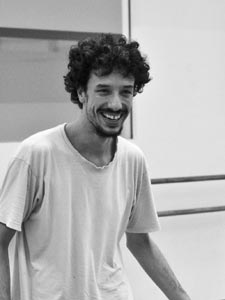 Andrea Costanzo Martini was born and raised in Italy (Piemonte, Cuneo) where he received his first education in contemporary dance and ballet.… At the age of 19 he moved to Munich, Germany where he attended the Heinz-Bosl Stiftung Ballet Akademien and in 2004 he began his professional career as a Ballet Dancer in the Aalto-Theater Essen. In 2006, he joined the Batsheva Ensemble and two years later moved to the main Company. During these years he extensively performed the repertoire of Ohad Naharin and Sharon Eyal and he began his activity as Gaga teacher and Choreographer through the “dancer create” program of the Company. He later joined the Cullberg Ballet in Stockholm where he performed in the repertoire of Benoit Lachambre, Alexander Ekman, Crystal Pite, Jefta Van Dinter and Tillman O’Donnel. He created a work for six men of the company” For men only” presented at the Moderne Dans Theater in Stockholm and participated in the solo program of Deborah Hay “This Empty Stage, an Ocean”. In 2012 he moved back to Israel where he created the solo “What Happened in Torino”, with which in March 2013 he was awarded First Prize for both dance and choreography at the “International Stuttgart Solo Competition” and in October 2015 awarded the audience prize at the Mas Danza Festival in Gran Canaria, Spain. Since then he created the works “Tropical”, “Voglio Voglia”, “Filthy Guilty”, “aaaaAAAAHHHH” and “TROP”, with the support of venues like Pavillon Noir Aix-en-Provence, Tanzhaus Zürich, Lublin Centrum Kultury, Suzan Dellal Center Tel Aviv, NOD Turin, Tmuna Theater Tel Aviv, Hateiva Theater and Teatro Piemonte Europa. In November 2016, he presented “SCARABEO, angles and the void”, a duet with Avidan Ben Giat as part of the Curtain Up Festival Tel Aviv and he also became an associate artist of Associazione culturale VAN (ITALY). In 2018 he created “Intro” for Balletto Di Roma and “Balera” for the Ballet Theater of Turin. In 2019 he was selected by TimeOut Tel Aviv as one of the upcoming artists to watch in Israel. In 2020 he created “Premiere” for Balletto Di Roma, a production entirely realized online during the pandemic; a first version of the piece had an exceptional debut in streaming at Teatro Quirino in December 2020. In 2021 he created “PayPer Play”, a work for young audiences. In December 2021 he presented “Mood Shifters” at the Curtain Up Festival in Israel, an intimate work for three dancers questioning the act of performing. In March 2022 he created the work “Wild thoughts” for National Dance Company Wales. The piece, now part of the company’s repertoire, is currently touring throughout the U.K. In 2023 Andrea created the duet “This is a dance” for Ballet de l’Opera d’Avignon. Parallel to this Andrea continues his activity as teacher of Gaga and Improvisation at the Gaga Center in Suzanne Dellal Center. He is a member of the Israeli Choreographers Association.
Andrea Costanzo Martini was born and raised in Italy (Piemonte, Cuneo) where he received his first education in contemporary dance and ballet.… At the age of 19 he moved to Munich, Germany where he attended the Heinz-Bosl Stiftung Ballet Akademien and in 2004 he began his professional career as a Ballet Dancer in the Aalto-Theater Essen. In 2006, he joined the Batsheva Ensemble and two years later moved to the main Company. During these years he extensively performed the repertoire of Ohad Naharin and Sharon Eyal and he began his activity as Gaga teacher and Choreographer through the “dancer create” program of the Company. He later joined the Cullberg Ballet in Stockholm where he performed in the repertoire of Benoit Lachambre, Alexander Ekman, Crystal Pite, Jefta Van Dinter and Tillman O’Donnel. He created a work for six men of the company” For men only” presented at the Moderne Dans Theater in Stockholm and participated in the solo program of Deborah Hay “This Empty Stage, an Ocean”. In 2012 he moved back to Israel where he created the solo “What Happened in Torino”, with which in March 2013 he was awarded First Prize for both dance and choreography at the “International Stuttgart Solo Competition” and in October 2015 awarded the audience prize at the Mas Danza Festival in Gran Canaria, Spain. Since then he created the works “Tropical”, “Voglio Voglia”, “Filthy Guilty”, “aaaaAAAAHHHH” and “TROP”, with the support of venues like Pavillon Noir Aix-en-Provence, Tanzhaus Zürich, Lublin Centrum Kultury, Suzan Dellal Center Tel Aviv, NOD Turin, Tmuna Theater Tel Aviv, Hateiva Theater and Teatro Piemonte Europa. In November 2016, he presented “SCARABEO, angles and the void”, a duet with Avidan Ben Giat as part of the Curtain Up Festival Tel Aviv and he also became an associate artist of Associazione culturale VAN (ITALY). In 2018 he created “Intro” for Balletto Di Roma and “Balera” for the Ballet Theater of Turin. In 2019 he was selected by TimeOut Tel Aviv as one of the upcoming artists to watch in Israel. In 2020 he created “Premiere” for Balletto Di Roma, a production entirely realized online during the pandemic; a first version of the piece had an exceptional debut in streaming at Teatro Quirino in December 2020. In 2021 he created “PayPer Play”, a work for young audiences. In December 2021 he presented “Mood Shifters” at the Curtain Up Festival in Israel, an intimate work for three dancers questioning the act of performing. In March 2022 he created the work “Wild thoughts” for National Dance Company Wales. The piece, now part of the company’s repertoire, is currently touring throughout the U.K. In 2023 Andrea created the duet “This is a dance” for Ballet de l’Opera d’Avignon. Parallel to this Andrea continues his activity as teacher of Gaga and Improvisation at the Gaga Center in Suzanne Dellal Center. He is a member of the Israeli Choreographers Association.
Fabiana Piccioli
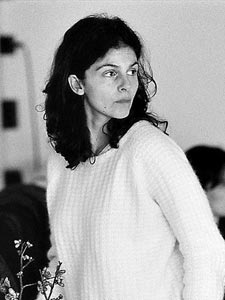 Born in Rome in 1976, Fabiana trained as a dancer and graduated in Philosophy at Università La Sapienza (Rome).… She continued her dance training in Brussels for a year, and in 2001 she started working as production manager for the Romaeuropa Festival. In 2005 she moved to London to join Akram Khan Company as Technical Director and Lighting Designer. In 2013 she became a freelance lighting designer, collaborating with international artists all over the world. She is now based in Rome. She has awarded the prize “Cavaliere dell’Illuminazione” several times: in 2013 with “iTMOI”, in 2017 with “Echi” and in 2018 with “Eugene Onegin”. During her long and fruitful career she has worked on many productions as lighting designer. Below there’s a short selection: Rigoletto, Oliver Mears (Royal Opera House 2021) / Antigone & Tiresias, Guy Cassiers (Bobigny 2021) / Don Giovanni, John Fulljames (Greek National Opera 2020) / Don Juan, Johan Inger for Aterballetto, (Centre National de Chaillot 2020) / Ghost, Kim Brandstrup (New York City Center’s Fall for Dance Festival 2019) / Rite of Spring, Yang Liping Company (premiere@Shanghai Festival 2018) / Satori, Raul Reinoso Acanda (Acosta danza, La Havana, Cuba 2018) / Bahr, Mavin Koo for the National Ballet of Malta (La Valletta 2017) / IUANMI, Lali Ayguadè (Temporada Alta Festival Girona 2017) / Le Nozze di Figaro, Frederic Wake Walker (Teatro La Scala 2016) / Ophelia’s room, Katie Mitchell (Schaubune Berlin 2016) / Bayadere – The Ninth Life, Shobana Jeyasingh (Royal Opera House 2015) / Kin, Sanjukta Sinha (Mumbai 2015) / Dust, Akram Khan (English National Ballet (2014) / Breathe, Errol White (Edinburg Festival 2014) / We-Part, Paolo Mangiola for Balletto di Roma (Civitanova Festival 2014) / GNOSIS, Akram Khan (Sadlers Wells 2010) / SVAPNAGATA FESTIVAL, Akram Khan and Nitin Sawhney (Sadlers Wells 2009). In 2022 she worked for “Sleeping Beauty” of the Stuttgart Ballet and she has many collaborations right now like the Festival dei Due Mondi of Spoleto, the Savonlinna Festival in Finland for the “Aida”, and many others. The first project where she worked as lighting designer and set designer was “Variations for Vibes Pianos and Strings”, a production by Akram Khan and London Sinfonietta Orchestra. Then “Bahok” with Akram Khan choreography. In 2015 she started a fruitful collaboration with the choreographer Sidi Larbi Cherkaoui and she projected lights and sets of “Harbour Me” (at Theatre du Chatelet in Paris in 2015), “Fall” (2015), “Qutb” (2016), “Requiem” (2017) and “Mermaid” (2017).
Born in Rome in 1976, Fabiana trained as a dancer and graduated in Philosophy at Università La Sapienza (Rome).… She continued her dance training in Brussels for a year, and in 2001 she started working as production manager for the Romaeuropa Festival. In 2005 she moved to London to join Akram Khan Company as Technical Director and Lighting Designer. In 2013 she became a freelance lighting designer, collaborating with international artists all over the world. She is now based in Rome. She has awarded the prize “Cavaliere dell’Illuminazione” several times: in 2013 with “iTMOI”, in 2017 with “Echi” and in 2018 with “Eugene Onegin”. During her long and fruitful career she has worked on many productions as lighting designer. Below there’s a short selection: Rigoletto, Oliver Mears (Royal Opera House 2021) / Antigone & Tiresias, Guy Cassiers (Bobigny 2021) / Don Giovanni, John Fulljames (Greek National Opera 2020) / Don Juan, Johan Inger for Aterballetto, (Centre National de Chaillot 2020) / Ghost, Kim Brandstrup (New York City Center’s Fall for Dance Festival 2019) / Rite of Spring, Yang Liping Company (premiere@Shanghai Festival 2018) / Satori, Raul Reinoso Acanda (Acosta danza, La Havana, Cuba 2018) / Bahr, Mavin Koo for the National Ballet of Malta (La Valletta 2017) / IUANMI, Lali Ayguadè (Temporada Alta Festival Girona 2017) / Le Nozze di Figaro, Frederic Wake Walker (Teatro La Scala 2016) / Ophelia’s room, Katie Mitchell (Schaubune Berlin 2016) / Bayadere – The Ninth Life, Shobana Jeyasingh (Royal Opera House 2015) / Kin, Sanjukta Sinha (Mumbai 2015) / Dust, Akram Khan (English National Ballet (2014) / Breathe, Errol White (Edinburg Festival 2014) / We-Part, Paolo Mangiola for Balletto di Roma (Civitanova Festival 2014) / GNOSIS, Akram Khan (Sadlers Wells 2010) / SVAPNAGATA FESTIVAL, Akram Khan and Nitin Sawhney (Sadlers Wells 2009). In 2022 she worked for “Sleeping Beauty” of the Stuttgart Ballet and she has many collaborations right now like the Festival dei Due Mondi of Spoleto, the Savonlinna Festival in Finland for the “Aida”, and many others. The first project where she worked as lighting designer and set designer was “Variations for Vibes Pianos and Strings”, a production by Akram Khan and London Sinfonietta Orchestra. Then “Bahok” with Akram Khan choreography. In 2015 she started a fruitful collaboration with the choreographer Sidi Larbi Cherkaoui and she projected lights and sets of “Harbour Me” (at Theatre du Chatelet in Paris in 2015), “Fall” (2015), “Qutb” (2016), “Requiem” (2017) and “Mermaid” (2017).
Shira Wise
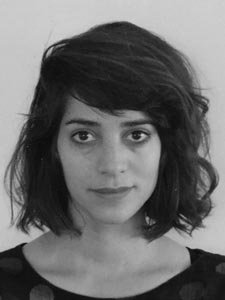 Shira is an Israeli costume designer living and working in Tel-Aviv, Israel.… Over the past 15 years she has designed costumes for dozens of theater, dance and opera productions, winning numerous prizes for her works. Shira started her theater studies at the Ecole internationale de théâtre Jacques Lecoq in Paris, later extending her education at the Rakefet Levi’s stage design School in Tel-Aviv. Shira specializes in surreal, larger-than-life costume designs. She believes that a costume should feel, look and move in a unique way – only then it can turn a performer into a character and become a meaningful part of a story.
Shira is an Israeli costume designer living and working in Tel-Aviv, Israel.… Over the past 15 years she has designed costumes for dozens of theater, dance and opera productions, winning numerous prizes for her works. Shira started her theater studies at the Ecole internationale de théâtre Jacques Lecoq in Paris, later extending her education at the Rakefet Levi’s stage design School in Tel-Aviv. Shira specializes in surreal, larger-than-life costume designs. She believes that a costume should feel, look and move in a unique way – only then it can turn a performer into a character and become a meaningful part of a story.
Balletto di Roma
Balletto di Roma Company has always promoted the production and dissemination of Italian author’s dance in Europe… and around the world, with a repertoire that is nowadays attentive to innovation and research, based on the history and tradition that have made it well known. Balletto di Roma was born in 1960 from the artistic partnership between two icons of Italian dance: Franca Bartolomei and Walter Zappolini. Over the path of its 63 years of life, it has seen a succession of prestigious collaborations and multiple creative souls, which have contributed to growing the production activity both in terms of quantity and quality of the works exhibited, with an increasing consensus from the public. Over time, the Roman Company has built a unique production model of its kind in Italy, aimed at preserving the repertoire and at the same time renewing it, through the support of choreographic creativity and the maintenance of the technical and interpretative level of the dancers. In addition to the characteristic branch of artistic production, Balletto di Roma also promotes all-round training: these are the two pillars of the dance institution. A parallel commitment that converges into a single brand of excellence in the Italian and international cultural panorama and which has the aim to improve the growth of the new generations and the recognition of their dance educational path at National and European level. A sustainable project thanks to the contribution of public entities (State/Italian Ministry of Culture, Lazio Region, Municipality of Rome, European Community, Italian Cultural Institutes) together with the approval of the large audience at the box office who come every year to attend the numerous scheduled performances. The current profile of the structure is the result of the managerial activity of Luciano Carratoni, general director of Balletto di Roma, who since the early 2000s has entrusted the artistic horizons to personalities of Italian and international dance: from Franca Bartolomei and Walter Zappolini, to Cristina Bozzolini and Roberto Casarotto until 2017, and then from 2018 bringing a significant generational change to the top of the structure by appointing Francesca Magnini to the artistic direction. The new figure has strengthened the schemes and broadened the internationalization objectives by involving many institutions, active in an important growth process which has allowed to combine tradition with innovation in the best possible way and to develop the presence of the Company in Europe and in the world. Since its establishment in 1960, Balletto di Roma has always been committed to enhancing and innovating the great classics of dance, belonging to the immense Italian and European culture, combined with contemporary languages. Through its training and production activities, supported by the most important Italian institutions, Balletto di Roma promotes the knowledge of Italian dance in the world with original performances that have made it well known in the most important national and world-wide theaters with titles that embody a great long lasting tradition such as Cinderella, The Nutcracker, Othello, Swan Lake, Don Quixote, Bolero, Giselle, just to mention some of the great successes staged in the last 20 years, until the exceptional “Juliet and Romeo” which restarted to meet the audience on the most important Italian and world stages in December 2022. With sold out in the major Italian theaters and the enthusiasm brought on stage throughout the whole 2023 Spring/Summer season, this work signed by the choreographer and director Fabrizio Monteverde, debuted in 1989 and was rearranged in 2002 by Balletto di Roma. Over the last 20 years it has proved to be one of the most successful productions in the Roman Company’s repertoire with a record number of performances and audience at the box office: with over 350 performances in national and international contexts and 250.000 spectators, in its genre it is the most acclaimed dance production ever in Italy, revived today to celebrate its 20th anniversary with Balletto di Roma, which will be hosted in China with an important one-month tour (September/October 2023) of 13 performances in 10 big cities.
 Andrea Costanzo Martini was born and raised in Italy (Piemonte, Cuneo) where he received his first education in contemporary dance and ballet.… At the age of 19 he moved to Munich, Germany where he attended the Heinz-Bosl Stiftung Ballet Akademien and in 2004 he began his professional career as a Ballet Dancer in the Aalto-Theater Essen. In 2006, he joined the Batsheva Ensemble and two years later moved to the main Company. During these years he extensively performed the repertoire of Ohad Naharin and Sharon Eyal and he began his activity as Gaga teacher and Choreographer through the “dancer create” program of the Company. He later joined the Cullberg Ballet in Stockholm where he performed in the repertoire of Benoit Lachambre, Alexander Ekman, Crystal Pite, Jefta Van Dinter and Tillman O’Donnel. He created a work for six men of the company” For men only” presented at the Moderne Dans Theater in Stockholm and participated in the solo program of Deborah Hay “This Empty Stage, an Ocean”. In 2012 he moved back to Israel where he created the solo “What Happened in Torino”, with which in March 2013 he was awarded First Prize for both dance and choreography at the “International Stuttgart Solo Competition” and in October 2015 awarded the audience prize at the Mas Danza Festival in Gran Canaria, Spain. Since then he created the works “Tropical”, “Voglio Voglia”, “Filthy Guilty”, “aaaaAAAAHHHH” and “TROP”, with the support of venues like Pavillon Noir Aix-en-Provence, Tanzhaus Zürich, Lublin Centrum Kultury, Suzan Dellal Center Tel Aviv, NOD Turin, Tmuna Theater Tel Aviv, Hateiva Theater and Teatro Piemonte Europa. In November 2016, he presented “SCARABEO, angles and the void”, a duet with Avidan Ben Giat as part of the Curtain Up Festival Tel Aviv and he also became an associate artist of Associazione culturale VAN (ITALY). In 2018 he created “Intro” for Balletto Di Roma and “Balera” for the Ballet Theater of Turin. In 2019 he was selected by TimeOut Tel Aviv as one of the upcoming artists to watch in Israel. In 2020 he created “Premiere” for Balletto Di Roma, a production entirely realized online during the pandemic; a first version of the piece had an exceptional debut in streaming at Teatro Quirino in December 2020. In 2021 he created “PayPer Play”, a work for young audiences. In December 2021 he presented “Mood Shifters” at the Curtain Up Festival in Israel, an intimate work for three dancers questioning the act of performing. In March 2022 he created the work “Wild thoughts” for National Dance Company Wales. The piece, now part of the company’s repertoire, is currently touring throughout the U.K. In 2023 Andrea created the duet “This is a dance” for Ballet de l’Opera d’Avignon. Parallel to this Andrea continues his activity as teacher of Gaga and Improvisation at the Gaga Center in Suzanne Dellal Center. He is a member of the Israeli Choreographers Association.
Andrea Costanzo Martini was born and raised in Italy (Piemonte, Cuneo) where he received his first education in contemporary dance and ballet.… At the age of 19 he moved to Munich, Germany where he attended the Heinz-Bosl Stiftung Ballet Akademien and in 2004 he began his professional career as a Ballet Dancer in the Aalto-Theater Essen. In 2006, he joined the Batsheva Ensemble and two years later moved to the main Company. During these years he extensively performed the repertoire of Ohad Naharin and Sharon Eyal and he began his activity as Gaga teacher and Choreographer through the “dancer create” program of the Company. He later joined the Cullberg Ballet in Stockholm where he performed in the repertoire of Benoit Lachambre, Alexander Ekman, Crystal Pite, Jefta Van Dinter and Tillman O’Donnel. He created a work for six men of the company” For men only” presented at the Moderne Dans Theater in Stockholm and participated in the solo program of Deborah Hay “This Empty Stage, an Ocean”. In 2012 he moved back to Israel where he created the solo “What Happened in Torino”, with which in March 2013 he was awarded First Prize for both dance and choreography at the “International Stuttgart Solo Competition” and in October 2015 awarded the audience prize at the Mas Danza Festival in Gran Canaria, Spain. Since then he created the works “Tropical”, “Voglio Voglia”, “Filthy Guilty”, “aaaaAAAAHHHH” and “TROP”, with the support of venues like Pavillon Noir Aix-en-Provence, Tanzhaus Zürich, Lublin Centrum Kultury, Suzan Dellal Center Tel Aviv, NOD Turin, Tmuna Theater Tel Aviv, Hateiva Theater and Teatro Piemonte Europa. In November 2016, he presented “SCARABEO, angles and the void”, a duet with Avidan Ben Giat as part of the Curtain Up Festival Tel Aviv and he also became an associate artist of Associazione culturale VAN (ITALY). In 2018 he created “Intro” for Balletto Di Roma and “Balera” for the Ballet Theater of Turin. In 2019 he was selected by TimeOut Tel Aviv as one of the upcoming artists to watch in Israel. In 2020 he created “Premiere” for Balletto Di Roma, a production entirely realized online during the pandemic; a first version of the piece had an exceptional debut in streaming at Teatro Quirino in December 2020. In 2021 he created “PayPer Play”, a work for young audiences. In December 2021 he presented “Mood Shifters” at the Curtain Up Festival in Israel, an intimate work for three dancers questioning the act of performing. In March 2022 he created the work “Wild thoughts” for National Dance Company Wales. The piece, now part of the company’s repertoire, is currently touring throughout the U.K. In 2023 Andrea created the duet “This is a dance” for Ballet de l’Opera d’Avignon. Parallel to this Andrea continues his activity as teacher of Gaga and Improvisation at the Gaga Center in Suzanne Dellal Center. He is a member of the Israeli Choreographers Association.Fabiana Piccioli
 Born in Rome in 1976, Fabiana trained as a dancer and graduated in Philosophy at Università La Sapienza (Rome).… She continued her dance training in Brussels for a year, and in 2001 she started working as production manager for the Romaeuropa Festival. In 2005 she moved to London to join Akram Khan Company as Technical Director and Lighting Designer. In 2013 she became a freelance lighting designer, collaborating with international artists all over the world. She is now based in Rome. She has awarded the prize “Cavaliere dell’Illuminazione” several times: in 2013 with “iTMOI”, in 2017 with “Echi” and in 2018 with “Eugene Onegin”. During her long and fruitful career she has worked on many productions as lighting designer. Below there’s a short selection: Rigoletto, Oliver Mears (Royal Opera House 2021) / Antigone & Tiresias, Guy Cassiers (Bobigny 2021) / Don Giovanni, John Fulljames (Greek National Opera 2020) / Don Juan, Johan Inger for Aterballetto, (Centre National de Chaillot 2020) / Ghost, Kim Brandstrup (New York City Center’s Fall for Dance Festival 2019) / Rite of Spring, Yang Liping Company (premiere@Shanghai Festival 2018) / Satori, Raul Reinoso Acanda (Acosta danza, La Havana, Cuba 2018) / Bahr, Mavin Koo for the National Ballet of Malta (La Valletta 2017) / IUANMI, Lali Ayguadè (Temporada Alta Festival Girona 2017) / Le Nozze di Figaro, Frederic Wake Walker (Teatro La Scala 2016) / Ophelia’s room, Katie Mitchell (Schaubune Berlin 2016) / Bayadere – The Ninth Life, Shobana Jeyasingh (Royal Opera House 2015) / Kin, Sanjukta Sinha (Mumbai 2015) / Dust, Akram Khan (English National Ballet (2014) / Breathe, Errol White (Edinburg Festival 2014) / We-Part, Paolo Mangiola for Balletto di Roma (Civitanova Festival 2014) / GNOSIS, Akram Khan (Sadlers Wells 2010) / SVAPNAGATA FESTIVAL, Akram Khan and Nitin Sawhney (Sadlers Wells 2009). In 2022 she worked for “Sleeping Beauty” of the Stuttgart Ballet and she has many collaborations right now like the Festival dei Due Mondi of Spoleto, the Savonlinna Festival in Finland for the “Aida”, and many others. The first project where she worked as lighting designer and set designer was “Variations for Vibes Pianos and Strings”, a production by Akram Khan and London Sinfonietta Orchestra. Then “Bahok” with Akram Khan choreography. In 2015 she started a fruitful collaboration with the choreographer Sidi Larbi Cherkaoui and she projected lights and sets of “Harbour Me” (at Theatre du Chatelet in Paris in 2015), “Fall” (2015), “Qutb” (2016), “Requiem” (2017) and “Mermaid” (2017).
Born in Rome in 1976, Fabiana trained as a dancer and graduated in Philosophy at Università La Sapienza (Rome).… She continued her dance training in Brussels for a year, and in 2001 she started working as production manager for the Romaeuropa Festival. In 2005 she moved to London to join Akram Khan Company as Technical Director and Lighting Designer. In 2013 she became a freelance lighting designer, collaborating with international artists all over the world. She is now based in Rome. She has awarded the prize “Cavaliere dell’Illuminazione” several times: in 2013 with “iTMOI”, in 2017 with “Echi” and in 2018 with “Eugene Onegin”. During her long and fruitful career she has worked on many productions as lighting designer. Below there’s a short selection: Rigoletto, Oliver Mears (Royal Opera House 2021) / Antigone & Tiresias, Guy Cassiers (Bobigny 2021) / Don Giovanni, John Fulljames (Greek National Opera 2020) / Don Juan, Johan Inger for Aterballetto, (Centre National de Chaillot 2020) / Ghost, Kim Brandstrup (New York City Center’s Fall for Dance Festival 2019) / Rite of Spring, Yang Liping Company (premiere@Shanghai Festival 2018) / Satori, Raul Reinoso Acanda (Acosta danza, La Havana, Cuba 2018) / Bahr, Mavin Koo for the National Ballet of Malta (La Valletta 2017) / IUANMI, Lali Ayguadè (Temporada Alta Festival Girona 2017) / Le Nozze di Figaro, Frederic Wake Walker (Teatro La Scala 2016) / Ophelia’s room, Katie Mitchell (Schaubune Berlin 2016) / Bayadere – The Ninth Life, Shobana Jeyasingh (Royal Opera House 2015) / Kin, Sanjukta Sinha (Mumbai 2015) / Dust, Akram Khan (English National Ballet (2014) / Breathe, Errol White (Edinburg Festival 2014) / We-Part, Paolo Mangiola for Balletto di Roma (Civitanova Festival 2014) / GNOSIS, Akram Khan (Sadlers Wells 2010) / SVAPNAGATA FESTIVAL, Akram Khan and Nitin Sawhney (Sadlers Wells 2009). In 2022 she worked for “Sleeping Beauty” of the Stuttgart Ballet and she has many collaborations right now like the Festival dei Due Mondi of Spoleto, the Savonlinna Festival in Finland for the “Aida”, and many others. The first project where she worked as lighting designer and set designer was “Variations for Vibes Pianos and Strings”, a production by Akram Khan and London Sinfonietta Orchestra. Then “Bahok” with Akram Khan choreography. In 2015 she started a fruitful collaboration with the choreographer Sidi Larbi Cherkaoui and she projected lights and sets of “Harbour Me” (at Theatre du Chatelet in Paris in 2015), “Fall” (2015), “Qutb” (2016), “Requiem” (2017) and “Mermaid” (2017).Shira Wise
 Shira is an Israeli costume designer living and working in Tel-Aviv, Israel.… Over the past 15 years she has designed costumes for dozens of theater, dance and opera productions, winning numerous prizes for her works. Shira started her theater studies at the Ecole internationale de théâtre Jacques Lecoq in Paris, later extending her education at the Rakefet Levi’s stage design School in Tel-Aviv. Shira specializes in surreal, larger-than-life costume designs. She believes that a costume should feel, look and move in a unique way – only then it can turn a performer into a character and become a meaningful part of a story.
Shira is an Israeli costume designer living and working in Tel-Aviv, Israel.… Over the past 15 years she has designed costumes for dozens of theater, dance and opera productions, winning numerous prizes for her works. Shira started her theater studies at the Ecole internationale de théâtre Jacques Lecoq in Paris, later extending her education at the Rakefet Levi’s stage design School in Tel-Aviv. Shira specializes in surreal, larger-than-life costume designs. She believes that a costume should feel, look and move in a unique way – only then it can turn a performer into a character and become a meaningful part of a story.Balletto di Roma
Balletto di Roma Company has always promoted the production and dissemination of Italian author’s dance in Europe… and around the world, with a repertoire that is nowadays attentive to innovation and research, based on the history and tradition that have made it well known. Balletto di Roma was born in 1960 from the artistic partnership between two icons of Italian dance: Franca Bartolomei and Walter Zappolini. Over the path of its 63 years of life, it has seen a succession of prestigious collaborations and multiple creative souls, which have contributed to growing the production activity both in terms of quantity and quality of the works exhibited, with an increasing consensus from the public. Over time, the Roman Company has built a unique production model of its kind in Italy, aimed at preserving the repertoire and at the same time renewing it, through the support of choreographic creativity and the maintenance of the technical and interpretative level of the dancers. In addition to the characteristic branch of artistic production, Balletto di Roma also promotes all-round training: these are the two pillars of the dance institution. A parallel commitment that converges into a single brand of excellence in the Italian and international cultural panorama and which has the aim to improve the growth of the new generations and the recognition of their dance educational path at National and European level. A sustainable project thanks to the contribution of public entities (State/Italian Ministry of Culture, Lazio Region, Municipality of Rome, European Community, Italian Cultural Institutes) together with the approval of the large audience at the box office who come every year to attend the numerous scheduled performances. The current profile of the structure is the result of the managerial activity of Luciano Carratoni, general director of Balletto di Roma, who since the early 2000s has entrusted the artistic horizons to personalities of Italian and international dance: from Franca Bartolomei and Walter Zappolini, to Cristina Bozzolini and Roberto Casarotto until 2017, and then from 2018 bringing a significant generational change to the top of the structure by appointing Francesca Magnini to the artistic direction. The new figure has strengthened the schemes and broadened the internationalization objectives by involving many institutions, active in an important growth process which has allowed to combine tradition with innovation in the best possible way and to develop the presence of the Company in Europe and in the world. Since its establishment in 1960, Balletto di Roma has always been committed to enhancing and innovating the great classics of dance, belonging to the immense Italian and European culture, combined with contemporary languages. Through its training and production activities, supported by the most important Italian institutions, Balletto di Roma promotes the knowledge of Italian dance in the world with original performances that have made it well known in the most important national and world-wide theaters with titles that embody a great long lasting tradition such as Cinderella, The Nutcracker, Othello, Swan Lake, Don Quixote, Bolero, Giselle, just to mention some of the great successes staged in the last 20 years, until the exceptional “Juliet and Romeo” which restarted to meet the audience on the most important Italian and world stages in December 2022. With sold out in the major Italian theaters and the enthusiasm brought on stage throughout the whole 2023 Spring/Summer season, this work signed by the choreographer and director Fabrizio Monteverde, debuted in 1989 and was rearranged in 2002 by Balletto di Roma. Over the last 20 years it has proved to be one of the most successful productions in the Roman Company’s repertoire with a record number of performances and audience at the box office: with over 350 performances in national and international contexts and 250.000 spectators, in its genre it is the most acclaimed dance production ever in Italy, revived today to celebrate its 20th anniversary with Balletto di Roma, which will be hosted in China with an important one-month tour (September/October 2023) of 13 performances in 10 big cities.
Request information

DANCERS
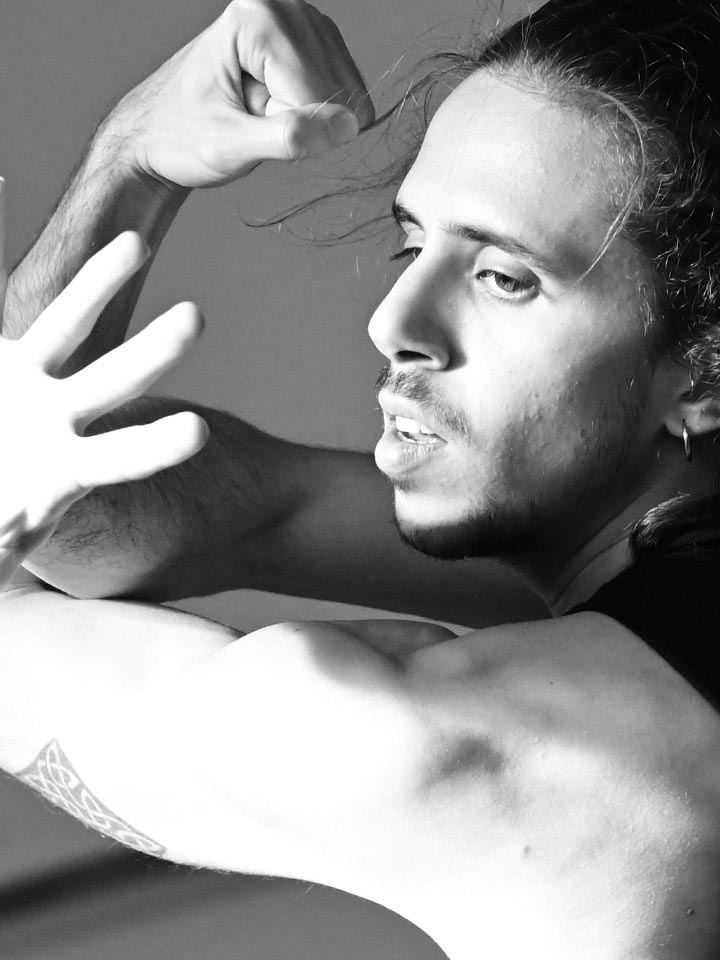
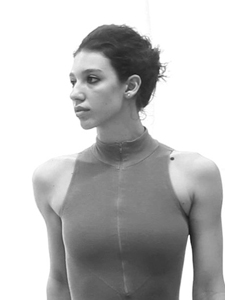

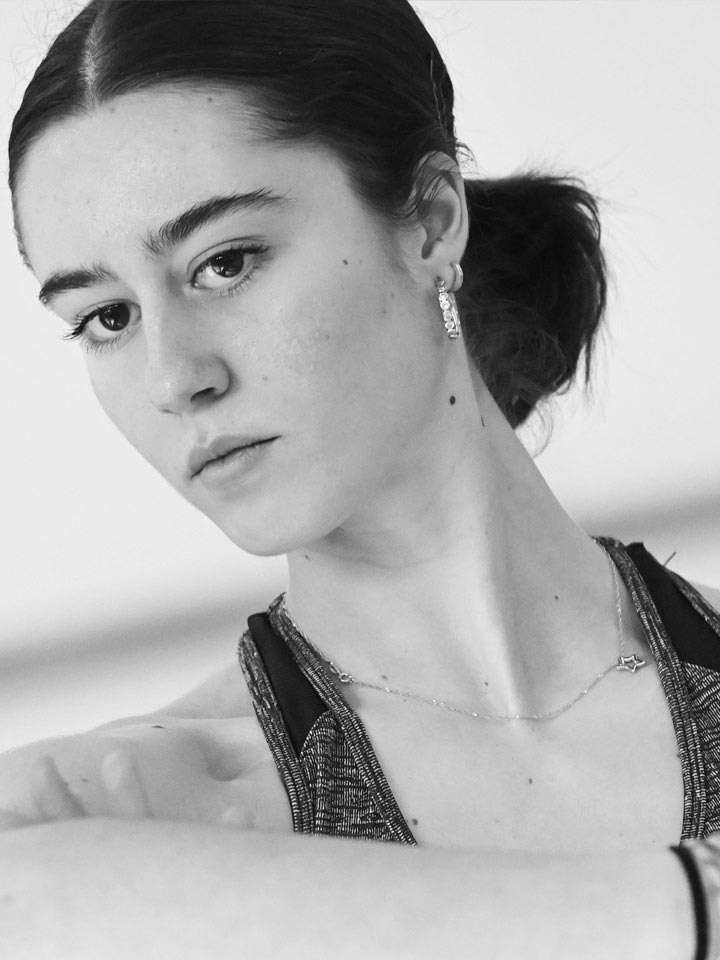
Roberta De Simone
Roberta studied ballet technique at the Renato Greco School of Dance (Rome), with teacher Lia Calizza. In 2005, she joined the Dance School of the Teatro dell’Opera in Rome under the direction of Paola Jorio where she graduated as a classical-academic dancer in 2009. During the years of study he participated in some productions of the company of Teatro dell’Opera in Rome, such as “Giselle” and “Sleeping Beauty”. In October 2009 she joined the staff of Balletto di Roma on a permanent basis, for which she played solo and main roles in all the new and repertoire productions, in the Italian and international tours: “Juliet and Romeo”, “Bolero” and “Cinderella” by Fabrizio Monteverde, “The Arena Love” by Michele Pogliani, “Contemporary Tango” and “Futura” by Milena Zullo, “We/Part” and “Fem” by Paolo Mangiola. In 2015, the choreographer Fabrizio Monteverde entrusted her with the role of the protagonist Odette in “Swan Lake, or Swan Song”, for which she was recommended by national critics. In 2016 he played Desdemona in “Othello” by Monteverde himself and in the following years participated in all the new productions of the company, including “Giselle” by Itamar Serussi and Chris Haring, “Turning” by Alessandro Sciarroni, “Arcaico” by Davide Bombana: she is among the protagonists, in 2020, of “Me, Don Quixote”, choreography and direction by Fabrizio Monteverde, and “Première”, choreography by Andrea Costanzo Martini. Protagonist of the 2022 remake of “Juliet and Romeo”, she also made her debut at the Vincenzo Bellini Theater in Catania in the production “DiNcAnTo. Dance steps on Bellini’s opera”, a work created in co-production with the orchestra of the Vittorio Emanuele Theater of Messina as part of the Bellini International Context, with choreography and video direction by Massimiliano Volpini, music from the symphonic lyric repertoire of Vincenzo Bellini arranged and conducted by Maestro Roberto Molinelli, with the extraordinary participation of “LE DIV4S” Italian Sopranos. Since 2017 she has been conducting masterclasses and focus on the repertoire of the Balletto di Roma for the “Formazione on Tour” project. Currently, in addition to carrying on the activity of interpreter, she supports various authors of the company as assistant to the choreography and maître de ballet. Furthermore, since 2020 she has been assistant to Maestro Derevianko and teacher for the professional courses of the Dance School and the CAP Professional Start-up Course of the Balletto di Roma. She will also be the protagonist, in the role of the “white swan”, in the production “Swan Lake, or Swan Song” by Fabrizio Monteverde (season 2023/2024).
Roberta studied ballet technique at the Renato Greco School of Dance (Rome), with teacher Lia Calizza. In 2005, she joined the Dance School of the Teatro dell’Opera in Rome under the direction of Paola Jorio where she graduated as a classical-academic dancer in 2009. During the years of study he participated in some productions of the company of Teatro dell’Opera in Rome, such as “Giselle” and “Sleeping Beauty”. In October 2009 she joined the staff of Balletto di Roma on a permanent basis, for which she played solo and main roles in all the new and repertoire productions, in the Italian and international tours: “Juliet and Romeo”, “Bolero” and “Cinderella” by Fabrizio Monteverde, “The Arena Love” by Michele Pogliani, “Contemporary Tango” and “Futura” by Milena Zullo, “We/Part” and “Fem” by Paolo Mangiola. In 2015, the choreographer Fabrizio Monteverde entrusted her with the role of the protagonist Odette in “Swan Lake, or Swan Song”, for which she was recommended by national critics. In 2016 he played Desdemona in “Othello” by Monteverde himself and in the following years participated in all the new productions of the company, including “Giselle” by Itamar Serussi and Chris Haring, “Turning” by Alessandro Sciarroni, “Arcaico” by Davide Bombana: she is among the protagonists, in 2020, of “Me, Don Quixote”, choreography and direction by Fabrizio Monteverde, and “Première”, choreography by Andrea Costanzo Martini. Protagonist of the 2022 remake of “Juliet and Romeo”, she also made her debut at the Vincenzo Bellini Theater in Catania in the production “DiNcAnTo. Dance steps on Bellini’s opera”, a work created in co-production with the orchestra of the Vittorio Emanuele Theater of Messina as part of the Bellini International Context, with choreography and video direction by Massimiliano Volpini, music from the symphonic lyric repertoire of Vincenzo Bellini arranged and conducted by Maestro Roberto Molinelli, with the extraordinary participation of “LE DIV4S” Italian Sopranos. Since 2017 she has been conducting masterclasses and focus on the repertoire of the Balletto di Roma for the “Formazione on Tour” project. Currently, in addition to carrying on the activity of interpreter, she supports various authors of the company as assistant to the choreography and maître de ballet. Furthermore, since 2020 she has been assistant to Maestro Derevianko and teacher for the professional courses of the Dance School and the CAP Professional Start-up Course of the Balletto di Roma. She will also be the protagonist, in the role of the “white swan”, in the production “Swan Lake, or Swan Song” by Fabrizio Monteverde (season 2023/2024).
Alessio Di Traglia
Alessio, of Italian-British nationality, has been trained as a dancer at the English National Ballet School – artistic direction Tamara Rojo, director of dance Viviana Durante – with masters Juan Eymar and David Yow. Previously, he attended the “Royal Ballet Senior Associates Program” (Covent Garden) in London with maestro Matthew Paluch; “Young Dancers Academy” with Josephine Holling and Anna Du Boisson; “Young Dancers Academy Associates” and “Escuela de Baile Flamenco Dance School”. As a professional dancer he has performed in numerous productions: from 2011 to 2013, oinPeter Pan (Anna Du Boisson) and from 2011 to 2014, with Young Dancers Academy, in Nutcracker (Anna Du Boisson/Irene Hardy) at the Bloomsbury Theater in London; in 2015, with the Queensland Ballet, he danced La Sylphide (Peter Schaufuss) at the London Coliseum; in 2015 and 2016, again with Young Dancers Academy, he played the lead role in Nutcracker (Anna Du Boisson/Irene Hardy) at the Shaftesbury Theater in London. In 2018 and 2019, with the English National Ballet School, he danced in Concert (Carlos Valcárcel) at the New Wimbledon Theater; in “My First Ballet”, a UK tour by Sleeping Beauty (Antonio Castilla) and in Winter Showcase (Ching-Ying Chien by Akram Khan Company). Between 2019 and 2020 he danced with the English National Ballet in “Cinderella” (by Christopher Wheeldon) at the Manchester Palace Theater – Southampton; in “The Nutcracker” (Wayne Eagling) at the Coliseum, London; in “Migration” da “Giselle”, (Akram Khan) and “The Reel” da “La Sylphide” (Peter Schaufuss) at the English National Ballet 70th Anniversary Gala at the London Coliseum. In October 2020 he performed “disTANZ” (Stéphen Delattre) with Delattre Dance Company at the Theater Kempton (Germany). He has also worked on the 2020/2021 repertoire: “Alice Im Wunderland”, “The Picture of Dorian Gray”, “Shelter”, “Filipe Portugal” (Delattre). In June 2021 he joined the Company of Balletto di Roma, making his debut in the production “Astor, a century of Tango ”, with the choreography of Valerio Longo. He also dances in “Première” by Andrea Costanzo Martini (2020) and “Juliet and Romeo” by F. Monteverde (2022).
Alessio, of Italian-British nationality, has been trained as a dancer at the English National Ballet School – artistic direction Tamara Rojo, director of dance Viviana Durante – with masters Juan Eymar and David Yow. Previously, he attended the “Royal Ballet Senior Associates Program” (Covent Garden) in London with maestro Matthew Paluch; “Young Dancers Academy” with Josephine Holling and Anna Du Boisson; “Young Dancers Academy Associates” and “Escuela de Baile Flamenco Dance School”. As a professional dancer he has performed in numerous productions: from 2011 to 2013, oinPeter Pan (Anna Du Boisson) and from 2011 to 2014, with Young Dancers Academy, in Nutcracker (Anna Du Boisson/Irene Hardy) at the Bloomsbury Theater in London; in 2015, with the Queensland Ballet, he danced La Sylphide (Peter Schaufuss) at the London Coliseum; in 2015 and 2016, again with Young Dancers Academy, he played the lead role in Nutcracker (Anna Du Boisson/Irene Hardy) at the Shaftesbury Theater in London. In 2018 and 2019, with the English National Ballet School, he danced in Concert (Carlos Valcárcel) at the New Wimbledon Theater; in “My First Ballet”, a UK tour by Sleeping Beauty (Antonio Castilla) and in Winter Showcase (Ching-Ying Chien by Akram Khan Company). Between 2019 and 2020 he danced with the English National Ballet in “Cinderella” (by Christopher Wheeldon) at the Manchester Palace Theater – Southampton; in “The Nutcracker” (Wayne Eagling) at the Coliseum, London; in “Migration” da “Giselle”, (Akram Khan) and “The Reel” da “La Sylphide” (Peter Schaufuss) at the English National Ballet 70th Anniversary Gala at the London Coliseum. In October 2020 he performed “disTANZ” (Stéphen Delattre) with Delattre Dance Company at the Theater Kempton (Germany). He has also worked on the 2020/2021 repertoire: “Alice Im Wunderland”, “The Picture of Dorian Gray”, “Shelter”, “Filipe Portugal” (Delattre). In June 2021 he joined the Company of Balletto di Roma, making his debut in the production “Astor, a century of Tango ”, with the choreography of Valerio Longo. He also dances in “Première” by Andrea Costanzo Martini (2020) and “Juliet and Romeo” by F. Monteverde (2022).
Alice Fenu
Alice Fenu was born in Sardinia, Tempio Pausania (Sassari). She graduated from high school in 2022 and she’s now attending the first year of the Biomedical Engineering degree program at the University of Campus Biomedico in Rome. She began her dance training at the Moviment’arti school in her hometown, studying ballet from eight years old, Royal Academy method (4th – 5th grade and intermediate). She also studied Modern dance/contemporary ISTD method, (4th degree and intermediate). She has studied also with Alessandro Bigonzetti, Alessandra Biancareddu, Katia Medici, Luigi Varriale and Annarita Ronconi and Myrna Kamara, Frederic Olivieri. In summer 2017 she attended Peridance Summer intensive in New York. In 2018 she participated in the International Dance Competition Confederation Nationale Danse (2nd) and in 2019 (1st). In summer 2018 she attended the summer intensive at English National Ballet school in London. In 2019 she participated in the project organized by Mauro De Candia “Tersicore”, receiving a scholarship for the “Corpi in Mostra” stage in Barletta. In summer 2019 she attended the summer intensive at L’Ecole Supérieure de Danse de Cannes Rosella Hightower and in the same year she joined the summer intensive at Rambert School in London. She also took part in the Olbia Choreographic Showcase competition, preparing a variation from Giselle and a contemporary duo (1st place/contemporary category). In September 2019 she moved to Rome to attend Balletto di Roma School courses with teachers such as Pablo Tapia Leyton, Serena Chiaretti, Chiara Casciani, Emanuele Burrafato, Adriana Borriello, Tiziano Di Muzio, Niko Piscopo, Leopoldo Guadagno, Fabrizio Monteverde. In 2020 she joined the CAP Project (Advanced professional Course) at Balletto di Roma, under the guide of Valerio Longo. In July 2021 she was selected to represent BdR in Portugal for the project “UP2DANCE” peer working workshop dance training in Portugal, with Azzurra Schena and Emanuele Burrafato. The project involved the Derida Dance Center (Bulgaria), Magenta Consultoria (Spain), Polish Dance Theatre (Poland), ICK (Netherlands) and Companhia de Dança de Almada (Portugal). In January 2022 she performed with the Company dancing in “Astor. One Century of Tango” by Valerio Longo. From march 2023 started to be part of the production “Juliet and Romeo” by Fabrizio Monteverde. She danced also in the creation “Nina” of Valerio Longo and from July 2023 in “Premiere”, by Andrea Costanzo Martini.
Alice Fenu was born in Sardinia, Tempio Pausania (Sassari). She graduated from high school in 2022 and she’s now attending the first year of the Biomedical Engineering degree program at the University of Campus Biomedico in Rome. She began her dance training at the Moviment’arti school in her hometown, studying ballet from eight years old, Royal Academy method (4th – 5th grade and intermediate). She also studied Modern dance/contemporary ISTD method, (4th degree and intermediate). She has studied also with Alessandro Bigonzetti, Alessandra Biancareddu, Katia Medici, Luigi Varriale and Annarita Ronconi and Myrna Kamara, Frederic Olivieri. In summer 2017 she attended Peridance Summer intensive in New York. In 2018 she participated in the International Dance Competition Confederation Nationale Danse (2nd) and in 2019 (1st). In summer 2018 she attended the summer intensive at English National Ballet school in London. In 2019 she participated in the project organized by Mauro De Candia “Tersicore”, receiving a scholarship for the “Corpi in Mostra” stage in Barletta. In summer 2019 she attended the summer intensive at L’Ecole Supérieure de Danse de Cannes Rosella Hightower and in the same year she joined the summer intensive at Rambert School in London. She also took part in the Olbia Choreographic Showcase competition, preparing a variation from Giselle and a contemporary duo (1st place/contemporary category). In September 2019 she moved to Rome to attend Balletto di Roma School courses with teachers such as Pablo Tapia Leyton, Serena Chiaretti, Chiara Casciani, Emanuele Burrafato, Adriana Borriello, Tiziano Di Muzio, Niko Piscopo, Leopoldo Guadagno, Fabrizio Monteverde. In 2020 she joined the CAP Project (Advanced professional Course) at Balletto di Roma, under the guide of Valerio Longo. In July 2021 she was selected to represent BdR in Portugal for the project “UP2DANCE” peer working workshop dance training in Portugal, with Azzurra Schena and Emanuele Burrafato. The project involved the Derida Dance Center (Bulgaria), Magenta Consultoria (Spain), Polish Dance Theatre (Poland), ICK (Netherlands) and Companhia de Dança de Almada (Portugal). In January 2022 she performed with the Company dancing in “Astor. One Century of Tango” by Valerio Longo. From march 2023 started to be part of the production “Juliet and Romeo” by Fabrizio Monteverde. She danced also in the creation “Nina” of Valerio Longo and from July 2023 in “Premiere”, by Andrea Costanzo Martini.
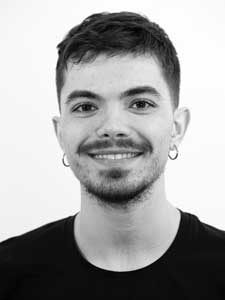
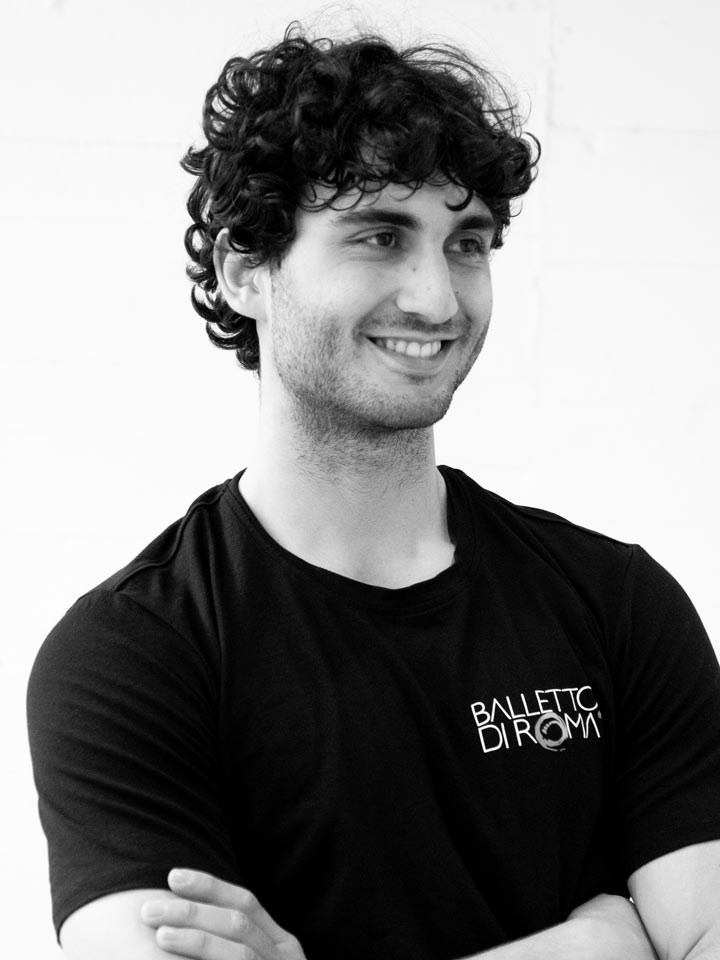

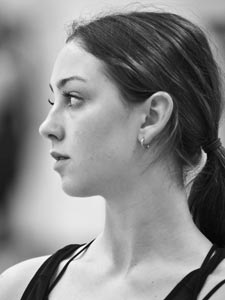
Francesco Moro
Francesco began his studies at the dance school directed by Luisa Sardelli in Ceglie Messapica (Brindisi). In 2013 he received a scholarship for the School of Balletto di Toscana, where he studied with Frédéric Oliveri, Paola Vismara, Francesca Caroti, Rafael Darder, Monica Caturegli, Cristiana Sciabordi, Francesco Nappa, Giuseppe Spota, Oliver Lucea, Stefania Di Cosmo, Eugenio Scigliano, Sabrina Vitangeli. He dances the role of Mercutio in the production “Romeo and Juliet” choreography by Davide Bombana and in “Giselle” by Eugenio Scigliano with the Junior Balletto di Toscana Company. He later plays the role of Narcissus in Davide Bombana’s “Galatea’s Myths” for Dance Cyprus. In 2016 he joined the DCE Company directed by Daniele Cipriani, where he danced the main and solo roles for three seasons in all major productions. In 2017 he participated in the “Notte della Taranta”, in Melpignano, where he interpreted the choreography of Luciano Cannito. In 2018 he received the “Europa in Danza” Award for the interpretation of the main role in “Mediterranea” by Mauro Bigonzetti, DCE production. In 2018 he worked in Germany at Theater Nordhausen. In the 2019/2020 season he joined the company of Balletto di Roma, dancing in full evening productions such as “Arcaico” by Davide Bombana (2018), “Premiére” by Andrea Costanzo Martini (2020), “Astor, a century of Tango” by Valerio Longo (2021), “Juliet and Romeo” by Fabrizio Monteverde (2022). In August 2022, in collaboration with Balletto di Roma, Corpus Corpi and the Municipality of Ceglie Messapica (Brindisi, Puglia), he organized and realized an evening called “Corpus Gala”, at the Ducal Castle of Ceglie Messapica with guests some soloists of the Company.
Francesco began his studies at the dance school directed by Luisa Sardelli in Ceglie Messapica (Brindisi). In 2013 he received a scholarship for the School of Balletto di Toscana, where he studied with Frédéric Oliveri, Paola Vismara, Francesca Caroti, Rafael Darder, Monica Caturegli, Cristiana Sciabordi, Francesco Nappa, Giuseppe Spota, Oliver Lucea, Stefania Di Cosmo, Eugenio Scigliano, Sabrina Vitangeli. He dances the role of Mercutio in the production “Romeo and Juliet” choreography by Davide Bombana and in “Giselle” by Eugenio Scigliano with the Junior Balletto di Toscana Company. He later plays the role of Narcissus in Davide Bombana’s “Galatea’s Myths” for Dance Cyprus. In 2016 he joined the DCE Company directed by Daniele Cipriani, where he danced the main and solo roles for three seasons in all major productions. In 2017 he participated in the “Notte della Taranta”, in Melpignano, where he interpreted the choreography of Luciano Cannito. In 2018 he received the “Europa in Danza” Award for the interpretation of the main role in “Mediterranea” by Mauro Bigonzetti, DCE production. In 2018 he worked in Germany at Theater Nordhausen. In the 2019/2020 season he joined the company of Balletto di Roma, dancing in full evening productions such as “Arcaico” by Davide Bombana (2018), “Premiére” by Andrea Costanzo Martini (2020), “Astor, a century of Tango” by Valerio Longo (2021), “Juliet and Romeo” by Fabrizio Monteverde (2022). In August 2022, in collaboration with Balletto di Roma, Corpus Corpi and the Municipality of Ceglie Messapica (Brindisi, Puglia), he organized and realized an evening called “Corpus Gala”, at the Ducal Castle of Ceglie Messapica with guests some soloists of the Company.
Lorenzo Petri
Lorenzo began his dance studies in his hometown (Florence) at the “Hamlyn School”. At 16 he moved to the capital to attend the Balletto di Roma School directed by Paola Jorio, and in 2017 he took part in the shows of the Junior Company of Balletto di Roma with “Coppelia” (direction and choreography by Milena Zullo). After attending the academic courses in the School of Dance, in 2019 he was selected by the artistic direction to become part of the CAP-Professional Training Course of the Rome Ballet. In 2020 he participated as a performer in the Inside Out Contemporary Dance Project, a rich calendar of dance events streamed on the BdR platform. In particular, he is among the protagonists of “Breathing the space”, a choreographic action in video by Pablo Tapia Leyton. In May 2021 he took part as a dancer, together with his colleagues from the CAP and with the choreography of Valerio Longo, in the international video production entitled “Metanoia”, polyphonic music project, codesigned by renowned Italian-Brazilian conductor Simone Menezes, the musicians from her chamber music ensemble “K”, and sponsored by Cartier, shot at the Antico Teatro in Sabbioneta. Since June 2021 he has been part of Balletto di Roma Company as interpreter of the new production “Astor, a century of Tango ”, with the choreography of Valerio Longo. He also dances in “Première” by Andrea Costanzo Martini (2020) and “Juliet and Romeo” by F. Monteverde (2022).
Lorenzo began his dance studies in his hometown (Florence) at the “Hamlyn School”. At 16 he moved to the capital to attend the Balletto di Roma School directed by Paola Jorio, and in 2017 he took part in the shows of the Junior Company of Balletto di Roma with “Coppelia” (direction and choreography by Milena Zullo). After attending the academic courses in the School of Dance, in 2019 he was selected by the artistic direction to become part of the CAP-Professional Training Course of the Rome Ballet. In 2020 he participated as a performer in the Inside Out Contemporary Dance Project, a rich calendar of dance events streamed on the BdR platform. In particular, he is among the protagonists of “Breathing the space”, a choreographic action in video by Pablo Tapia Leyton. In May 2021 he took part as a dancer, together with his colleagues from the CAP and with the choreography of Valerio Longo, in the international video production entitled “Metanoia”, polyphonic music project, codesigned by renowned Italian-Brazilian conductor Simone Menezes, the musicians from her chamber music ensemble “K”, and sponsored by Cartier, shot at the Antico Teatro in Sabbioneta. Since June 2021 he has been part of Balletto di Roma Company as interpreter of the new production “Astor, a century of Tango ”, with the choreography of Valerio Longo. He also dances in “Première” by Andrea Costanzo Martini (2020) and “Juliet and Romeo” by F. Monteverde (2022).
Carola Puddu
Carola began dancing at the age of 4 in Cagliari (Sardinia), with her Polish teacher Anna Kukurba. At the age of 9 she moved to France entering the ballet school of the Paris Opera Ballet (École de danse du Ballet de l’Opera de Paris) where she took all the years of study until she graduated in 2018, obtaining her first solo role at age 17. During her studies at the Paris Opera, Carola got her first solo role at the age of 17 and danced the repertoire of choreographers such as Roland Petit, Maurice Béjart, Auguste Bournonville, William Forsythe, George Balanchine and Marius Petipa, up to obtaining solo roles in “Un Ballo” by Jirì Kylian and John Neumeier’s “Spring and Fall”. John Neumeier’s repertoire led Carola to perform on various tours such as in Germany at the Hamburg Ballet and in Russia, at the Stanislavsky Theater of Moscow. In 2019 Carola moved to Toronto and joined the Professional Training Program with Canada’s National Ballet School, where after recovering from a serious injury, she danced in productions by Spanish choreographer Roman Oller, including “Romeo and Juliet” where interprets Juliet’s mother’s nursery school in its contemporary version. In Canada, Carola opened up to new styles such as contemporary and the Gaga Movement. In 2021 she entered the class of the school of “Amici di Maria De Filippi”, the famous Italian TV program. Student of the teacher Alessandra Celentano, upon her exit from the program Carola is called to be part of the staff of Balletto di Roma, where she will also play the role of Juliet in the famous ballet “Juliet and Romeo” by Fabrizio Monteverde, on the occasion of the 20th anniversary of this historic choreographic staging, curated by Balletto di Roma (2002-2022). She also dances in “Première” by Andrea Costanzo Martini (2021). She will also be the protagonist, in the role of the “black swan”, in the production “Swan Lake, or Swan Song” by Fabrizio Monteverde (season 2023/2024).
Carola began dancing at the age of 4 in Cagliari (Sardinia), with her Polish teacher Anna Kukurba. At the age of 9 she moved to France entering the ballet school of the Paris Opera Ballet (École de danse du Ballet de l’Opera de Paris) where she took all the years of study until she graduated in 2018, obtaining her first solo role at age 17. During her studies at the Paris Opera, Carola got her first solo role at the age of 17 and danced the repertoire of choreographers such as Roland Petit, Maurice Béjart, Auguste Bournonville, William Forsythe, George Balanchine and Marius Petipa, up to obtaining solo roles in “Un Ballo” by Jirì Kylian and John Neumeier’s “Spring and Fall”. John Neumeier’s repertoire led Carola to perform on various tours such as in Germany at the Hamburg Ballet and in Russia, at the Stanislavsky Theater of Moscow. In 2019 Carola moved to Toronto and joined the Professional Training Program with Canada’s National Ballet School, where after recovering from a serious injury, she danced in productions by Spanish choreographer Roman Oller, including “Romeo and Juliet” where interprets Juliet’s mother’s nursery school in its contemporary version. In Canada, Carola opened up to new styles such as contemporary and the Gaga Movement. In 2021 she entered the class of the school of “Amici di Maria De Filippi”, the famous Italian TV program. Student of the teacher Alessandra Celentano, upon her exit from the program Carola is called to be part of the staff of Balletto di Roma, where she will also play the role of Juliet in the famous ballet “Juliet and Romeo” by Fabrizio Monteverde, on the occasion of the 20th anniversary of this historic choreographic staging, curated by Balletto di Roma (2002-2022). She also dances in “Première” by Andrea Costanzo Martini (2021). She will also be the protagonist, in the role of the “black swan”, in the production “Swan Lake, or Swan Song” by Fabrizio Monteverde (season 2023/2024).
Giulia Strambini
Giulia began attending ballet lessons at the age of 5 at Gianna Manoni’s Arabesque Dance Center in Tirano, in the province of Sondrio. At the age of 11 she joined the Teatro alla Scala Ballet School in Milan, which she attended for three years. She continued her training at the Ecole Supérieure de Danse de Cannes/Marseille Rosella Hightower, directed by Paola Cantalupo, initially in Cannes (from 2011 to 2015) and later in Marseille (2015-2016). Here she learns and perfects various artistic disciplines including classical, contemporary dance, jazz dance, choreography, movement analysis, history of dance, anatomy and physiology, music, and body rhythm. She obtained the Diplome National Supérieur Professionnel de danseur in 2017, later she joined the Ballet Preljocaj Junior in Aix-en-Provence where she came into contact with contemporary choreographers including Nathanael Marie, Hervé Koubi, Francesco Curci, Christophe Garcìa, Yasuyuki Endo et Olivier Dubois. She also works with Angelin Preljocaj for “Peurs Bleus” and “Roméo et Juliette” and with Hervé Chaussard, artist associated with the Pavillon Noir, for “Cha-Cha”. From May 2018 she joined the Company of Balletto di Roma, dancing in productions such as “Arcaico” by Davide Bombana (2018), “The Nutcracker” by Massimiliano Volpini (2018), “I dream, a midsummer night” by Davide Valrosso (2018), “Me, Don Quixote” by F. Monteverde (2019), “L’Albero dei Sogni” by Valerio Longo (2019), “Première” by Andrea Costanzo Martini (2020) and “Astor, a century of Tango” (2021) and “Claire de lune” (2022) by V. Longo, “Juliet and Romeo” by Fabrizio Monteverde (2022). In 2022 she was also involved in the short film RADIX III, curated by Cristiano Leone, with choreography by Iratxe Ansa and Igor Bacovich, shot at the Galleria Borghese in Rome.
Giulia began attending ballet lessons at the age of 5 at Gianna Manoni’s Arabesque Dance Center in Tirano, in the province of Sondrio. At the age of 11 she joined the Teatro alla Scala Ballet School in Milan, which she attended for three years. She continued her training at the Ecole Supérieure de Danse de Cannes/Marseille Rosella Hightower, directed by Paola Cantalupo, initially in Cannes (from 2011 to 2015) and later in Marseille (2015-2016). Here she learns and perfects various artistic disciplines including classical, contemporary dance, jazz dance, choreography, movement analysis, history of dance, anatomy and physiology, music, and body rhythm. She obtained the Diplome National Supérieur Professionnel de danseur in 2017, later she joined the Ballet Preljocaj Junior in Aix-en-Provence where she came into contact with contemporary choreographers including Nathanael Marie, Hervé Koubi, Francesco Curci, Christophe Garcìa, Yasuyuki Endo et Olivier Dubois. She also works with Angelin Preljocaj for “Peurs Bleus” and “Roméo et Juliette” and with Hervé Chaussard, artist associated with the Pavillon Noir, for “Cha-Cha”. From May 2018 she joined the Company of Balletto di Roma, dancing in productions such as “Arcaico” by Davide Bombana (2018), “The Nutcracker” by Massimiliano Volpini (2018), “I dream, a midsummer night” by Davide Valrosso (2018), “Me, Don Quixote” by F. Monteverde (2019), “L’Albero dei Sogni” by Valerio Longo (2019), “Première” by Andrea Costanzo Martini (2020) and “Astor, a century of Tango” (2021) and “Claire de lune” (2022) by V. Longo, “Juliet and Romeo” by Fabrizio Monteverde (2022). In 2022 she was also involved in the short film RADIX III, curated by Cristiano Leone, with choreography by Iratxe Ansa and Igor Bacovich, shot at the Galleria Borghese in Rome.

BALLETTO DI ROMA
via della Pineta Sacchetti, 199
00167 Roma
Tel: 06 9032762 | 06 90375236
promozione@ballettodiroma.com
with the support of

with the contribution of

condividi


